This week’s instalment of the Project of the Week series features a colourful and design-led kitchen design by 2021 SBID Awards Finalist, Pikcells.
SBID Awards Category: CGI & Visualisation
Practice: Pikcells
Project: Forest Green Shaker Family Kitchen
Location: West Yorkshire, United Kingdom
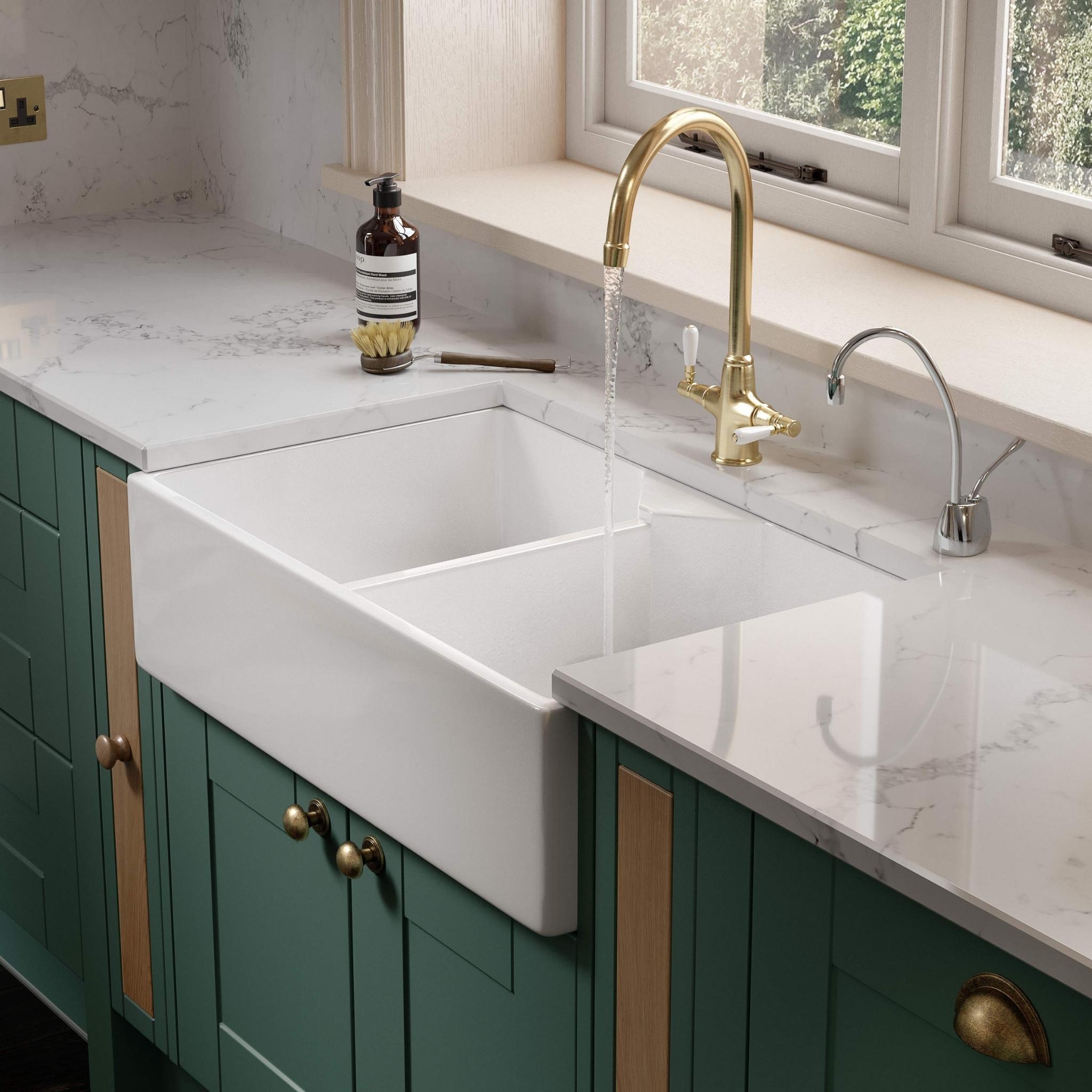
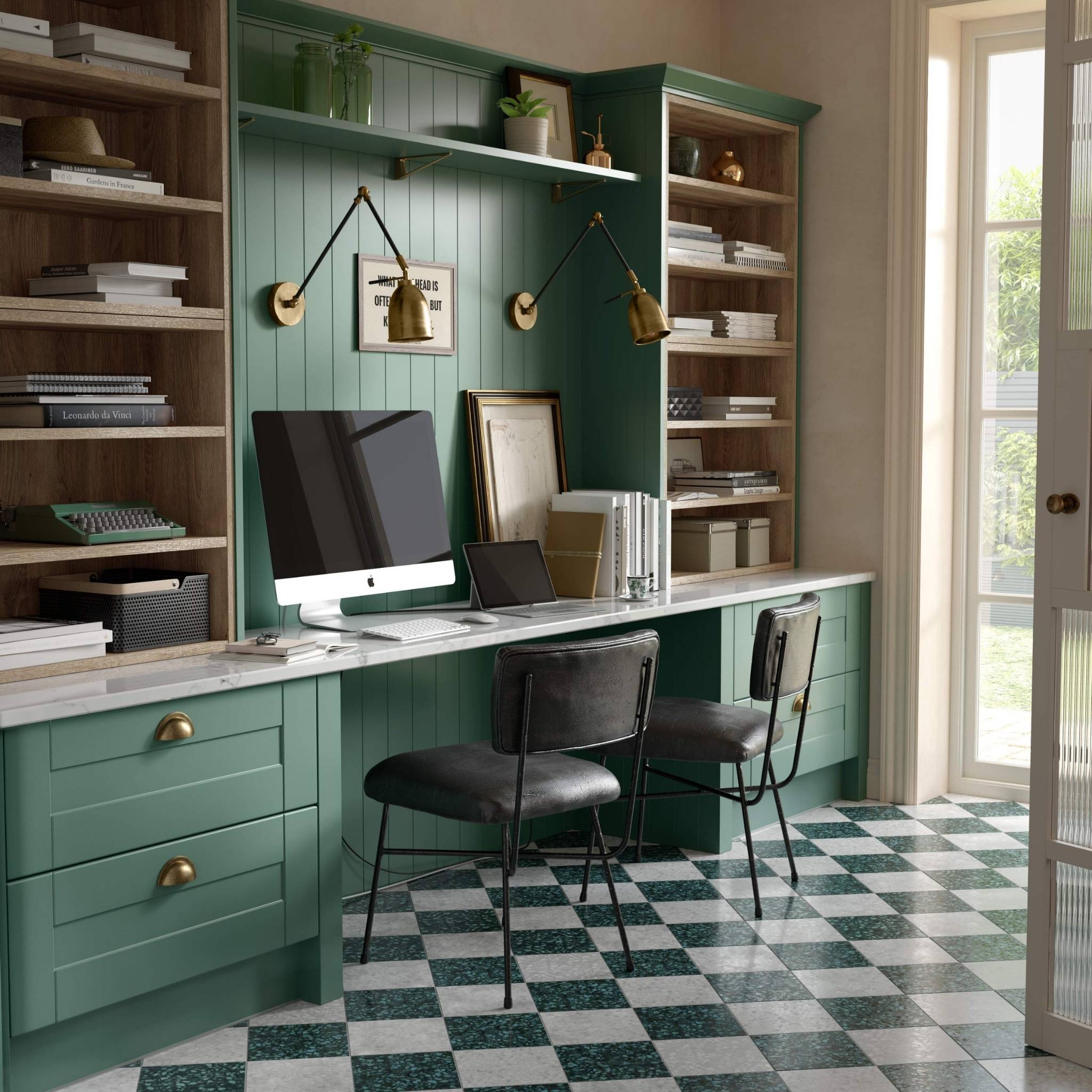
What was the client's brief?
To create a 'Kitchen of the Year' focusing on current trends such as working from home. With the kitchen space being the hub of the home and centre of different social activities, it must be suitable for not only cooking, but the kids doing homework and serving as a multifunctional entertainment space.
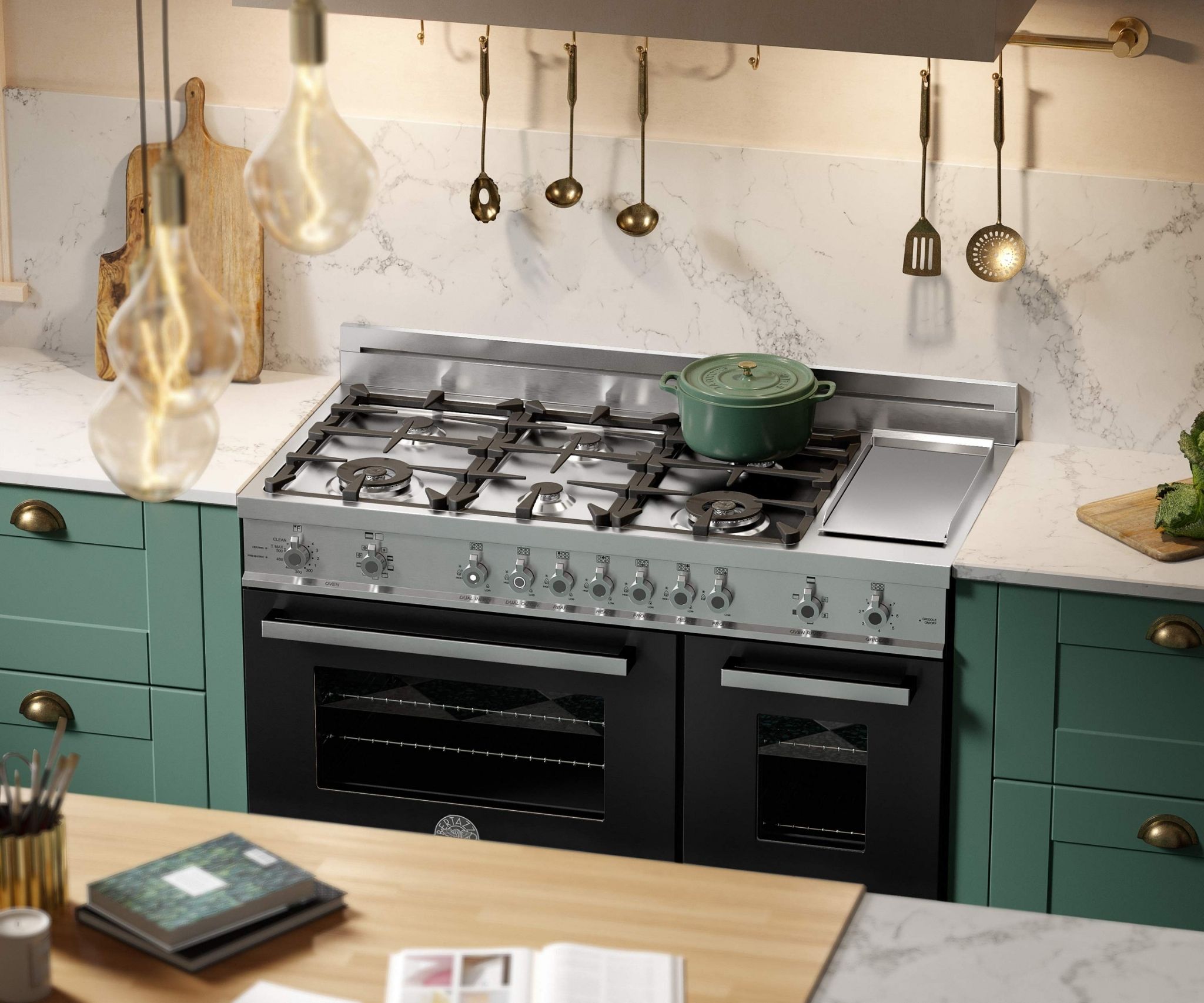
What inspired the design of the project?
We did research into the current use of kitchen space, how work from home areas are being adapted from other spaces (in our case we used what would have been a boot room). Colour and pattern trends also inspired the design using green and pink hues, chequered terrazzo tiles, marble worktops and backsplashes, as well as internal crittall doors creating a 'broken-plan' space and pantries.
What was the toughest hurdle your team overcame during the project?
Working within a more attainable size setting whilst still being able to incorporate all of the design features we just mentioned.
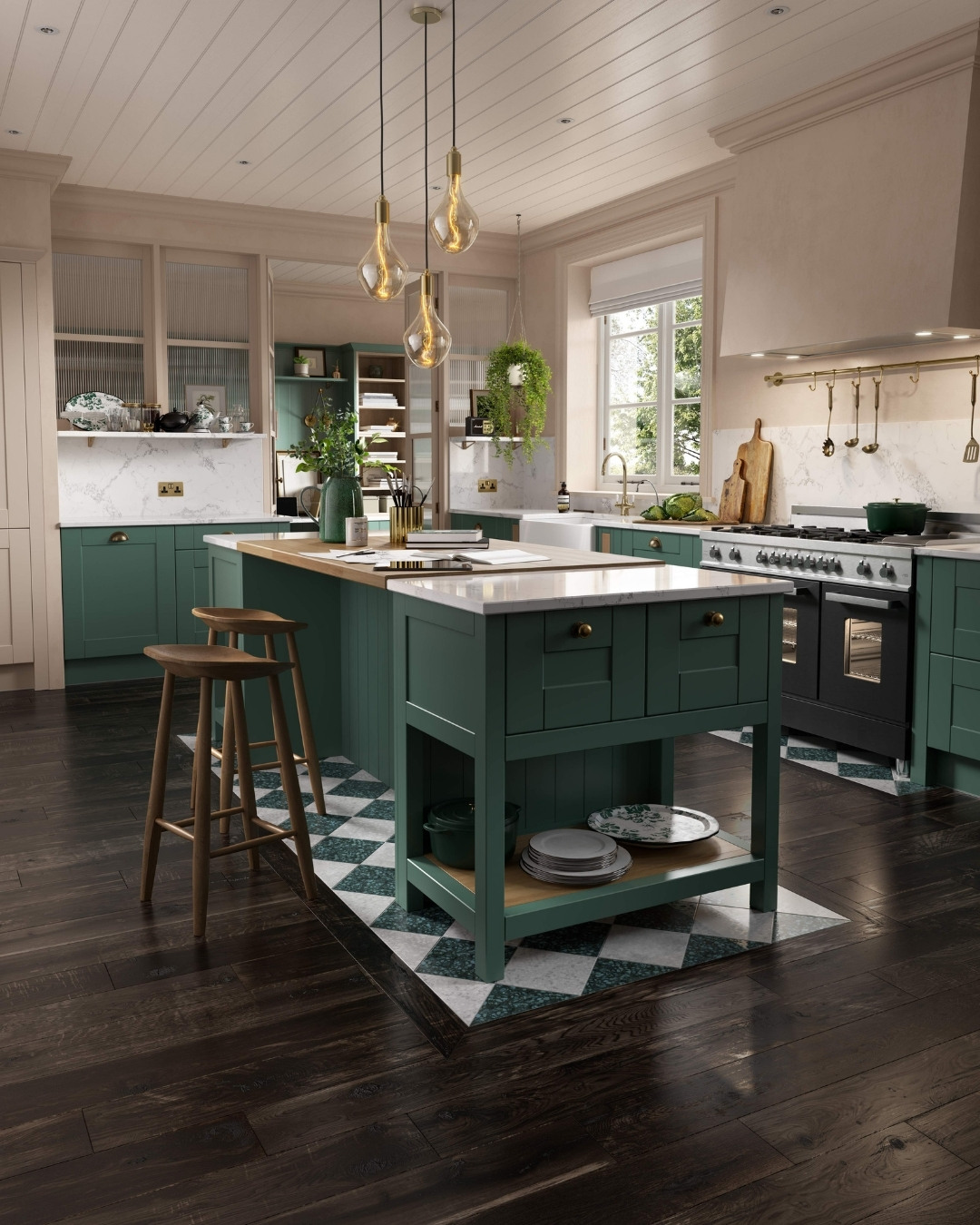
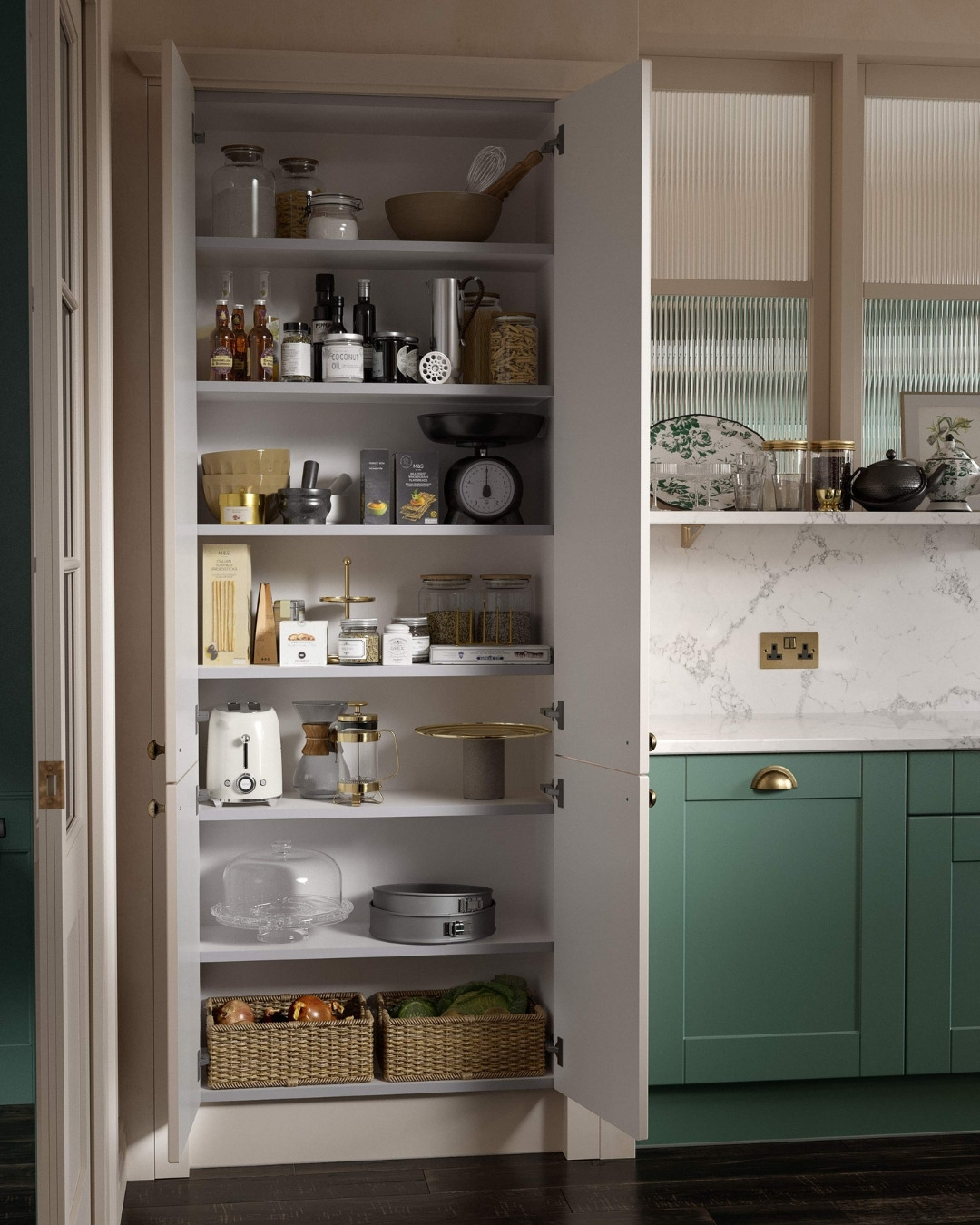
What was your team’s highlight of the project?
Creating a bold, impactful colour palette for the scheme, and also successfully incorporating a functional desk area into the design to improve the client's lifestyle and use of their kitchen space.
Why did you enter this project into the SBID Awards?
We felt the design was strongly influenced by current trends and consumer needs for kitchen environments, designed for modern living. Also it showcases that luxury-looking bespoke kitchens can still be attainable and affordable.
Questions answered by Tanya Bailey, Senior Interior Designer, Pikcells.
Charlie Smallbone of Ledbury Studio has unveiled the Marquetry Collection. This stunning new bespoke kitchen has its debut in the studio of interior design and architectural practice, Hill House Interiors. Charlie is renowned for his luxurious design style, razor-like attention to detail and commitment to innovation – and the Marquetry Collection is no exception to this. Here Charlie reveals all about Ledbury Studio's latest offering.
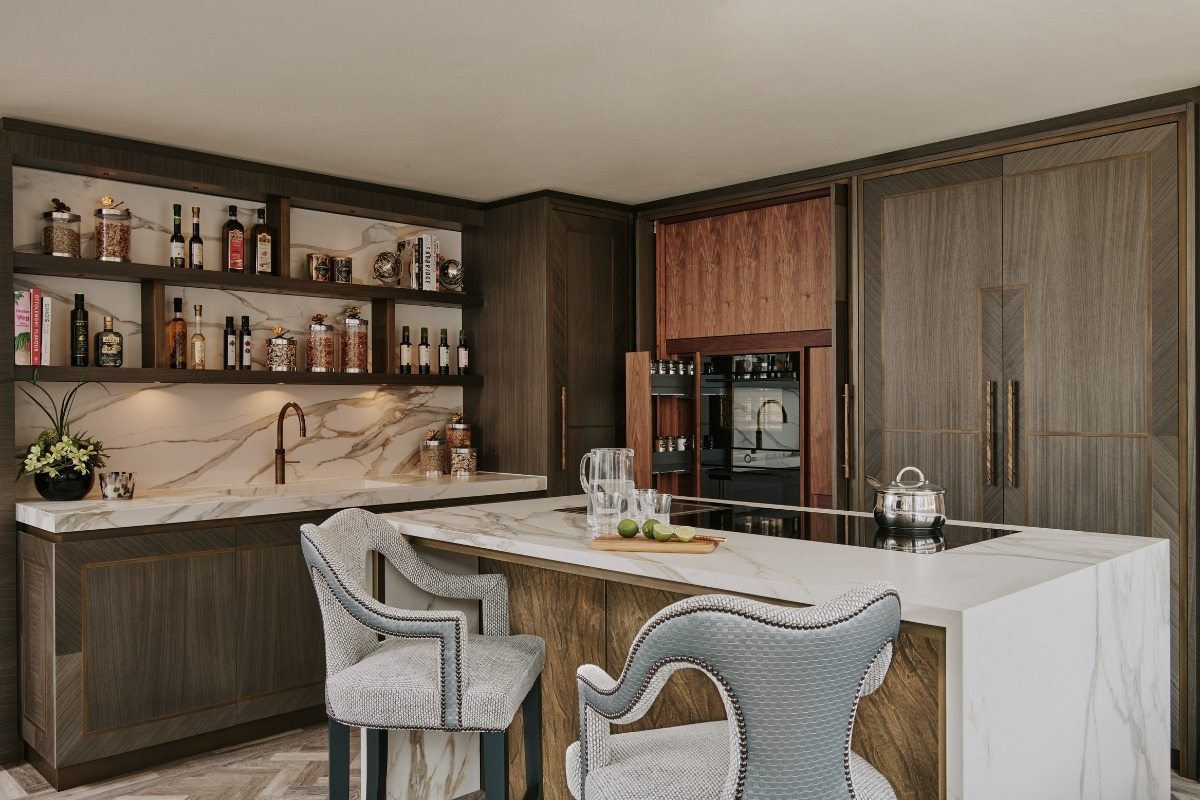
What was the project brief?
The brief was an interesting one! We were asked to conceal the conventional elements of the kitchen behind beautiful cupboard doors so that the generous open-plan space can instantly switch from living to dining to cooking.
To achieve this, we specified two sets of pocket doors that slide back to reveal appliances and a wealth of storage. Particularly savvy are the walnut veneer larder pull-outs that we installed either side of the bank of ovens. Although narrow, they are great for stashing all the cooking essentials you’ll need to access at a moment’s notice.
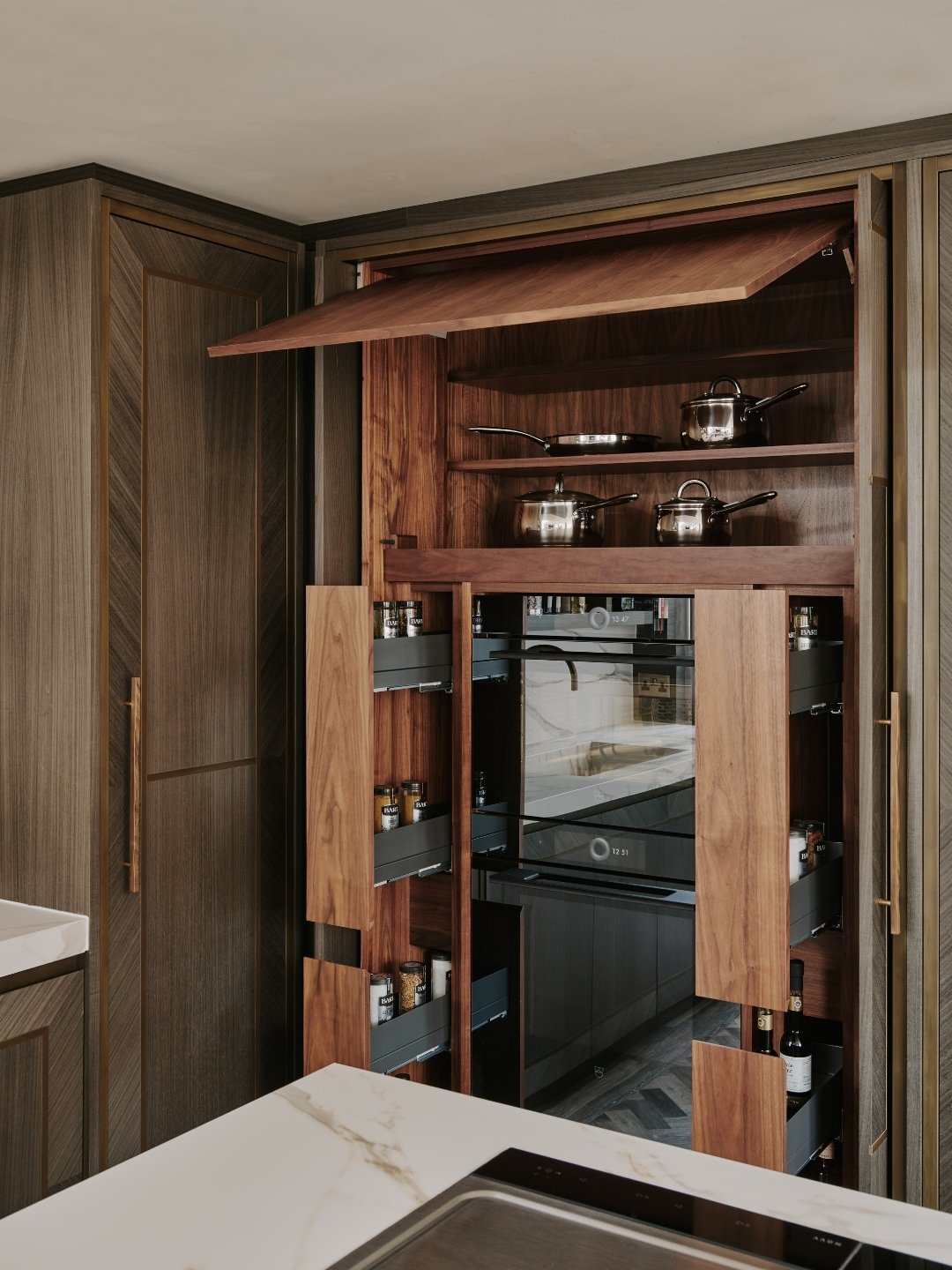
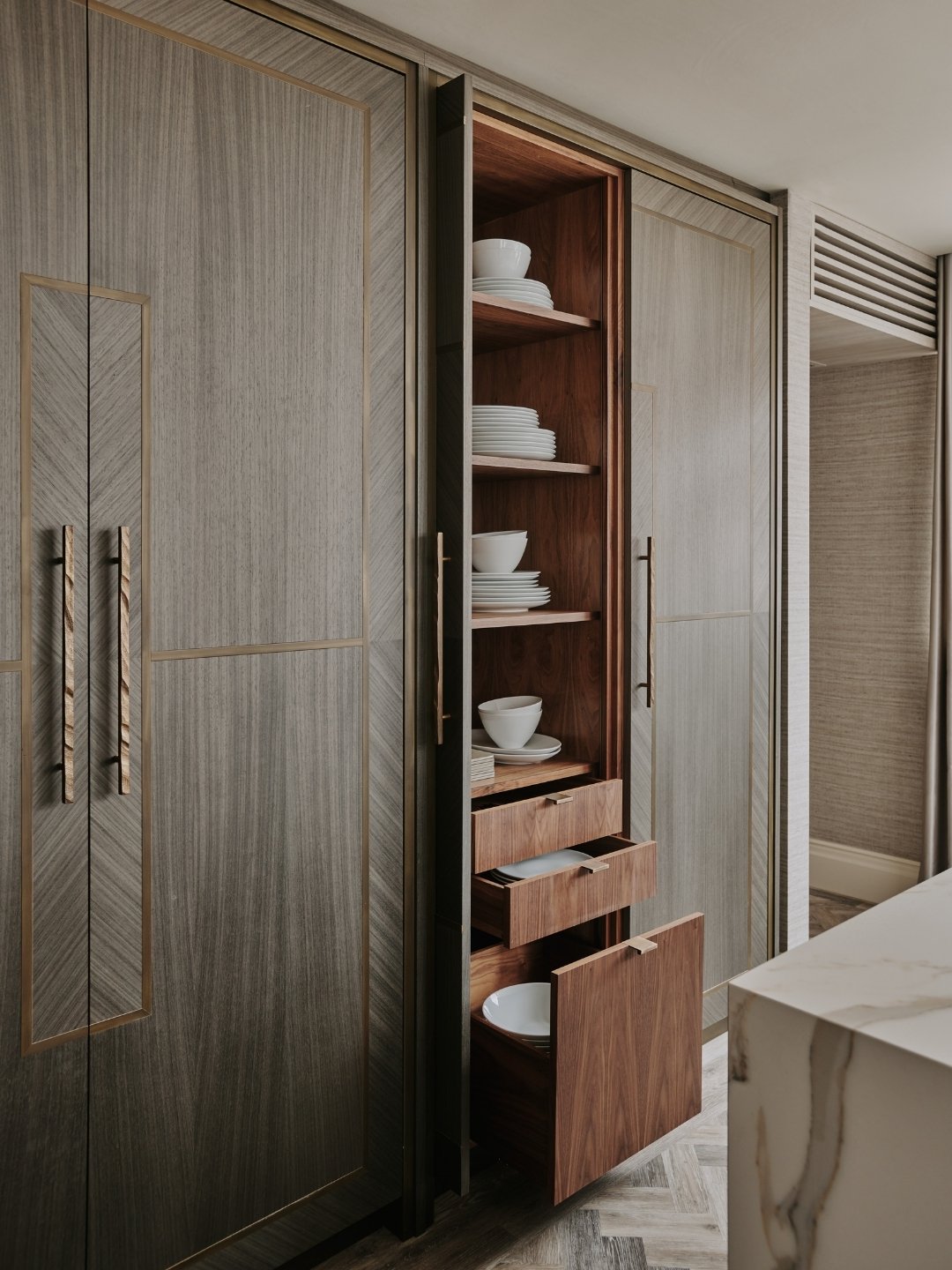
What is unique about the cupboard design in The Marquetry Collection?
In keeping with Ledbury Studio’s signature aesthetic, The Marquetry Collection is a contemporary take on traditional artisanal skills. Directional veneers were applied by hand to form a decorative pattern and inlaid with aged bronze. Bespoke handles, also in aged bronze, add the finishing touch.
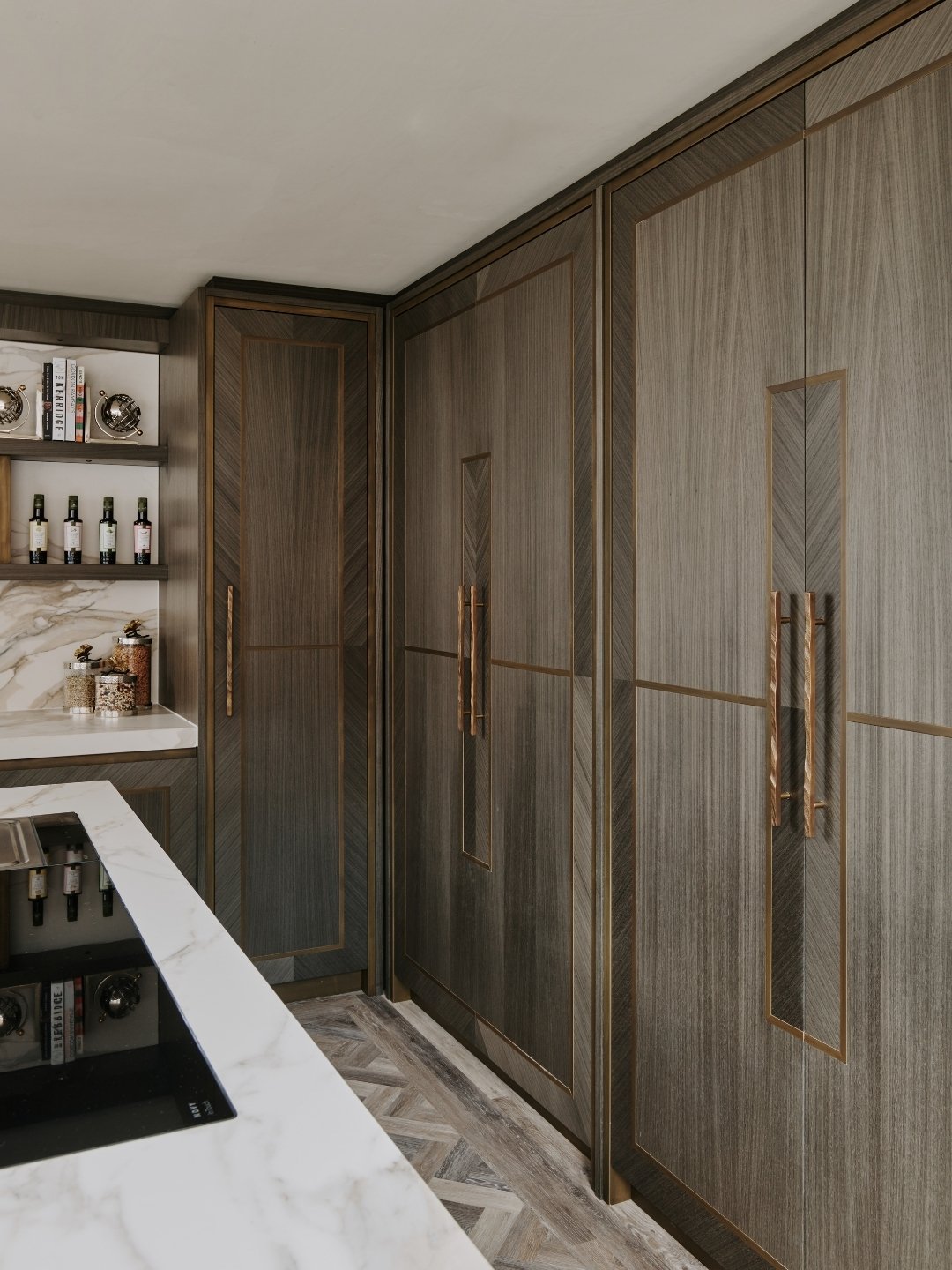
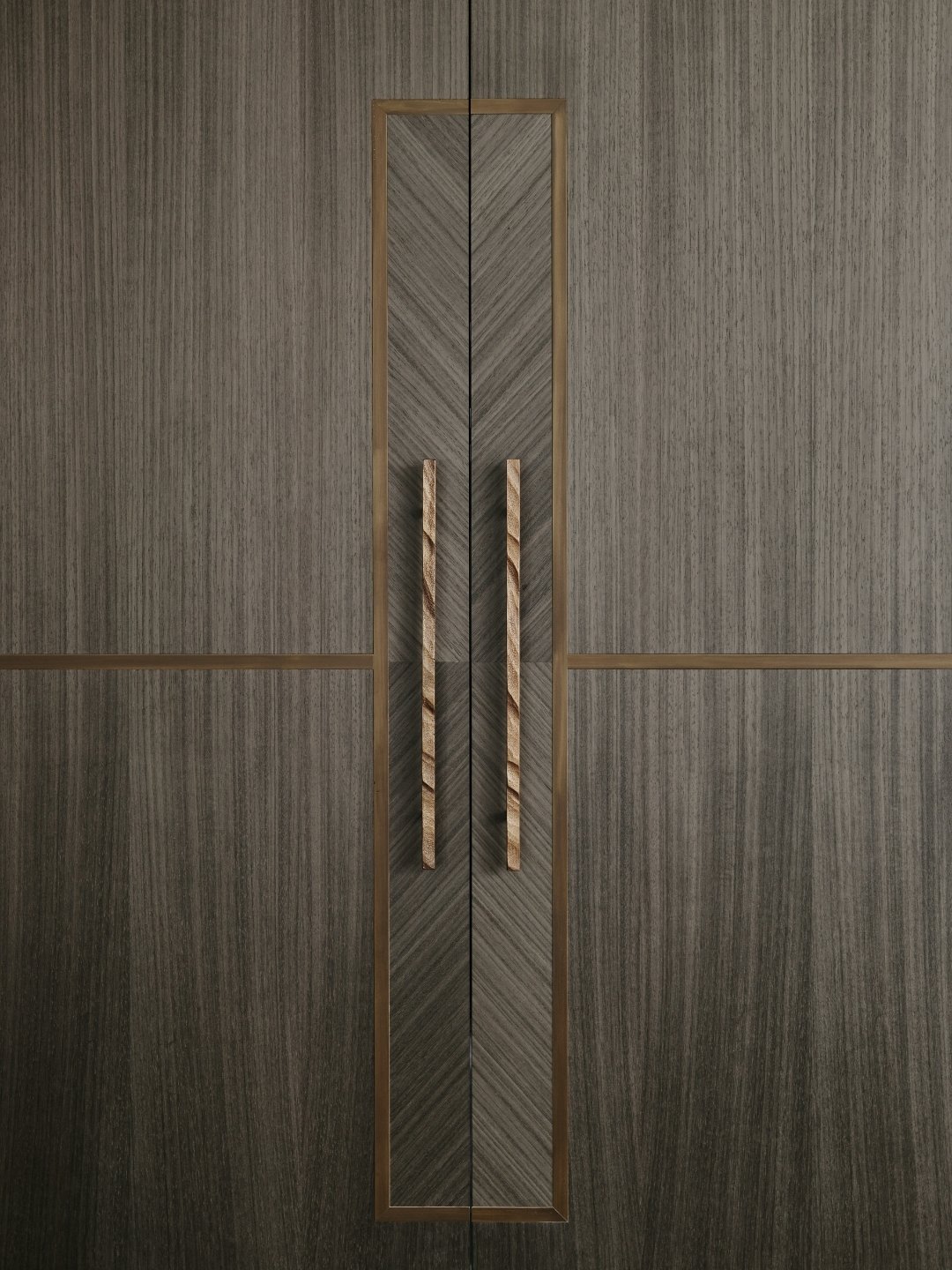
The island is spectacular, what was your thinking here?
The front of the island is clad in solid brass which has been distressed by hand, then aged and patinated. As a design feature, it injects texture and provides a contrast with the smooth marquetry panels. A porcelain surface wraps round the solid brass panel, chosen for its combination of stylish good looks and hardwearing properties. Non-porous porcelain is also a practical choice for the integrated sink, and creates a beautiful backdrop to the open shelving.
By locating the hob on the island, we have maximised the sociability of the space. While preparing dinner, the designated chef can carry on a conversation with whoever is perched at the breakfast bar or sitting at the dining table.
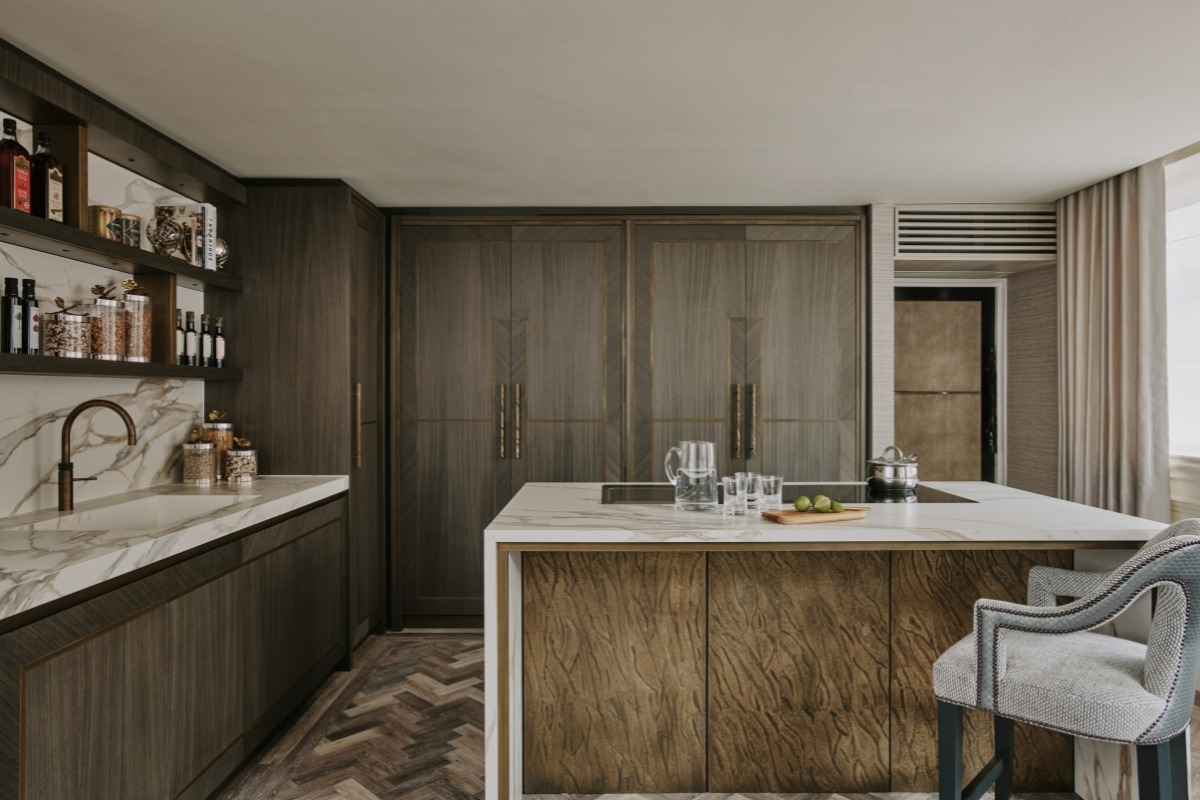
What does the open storage add to this kitchen?
Open storage never fails to inject a generous dose of personality into a kitchen. Although our brief was to hide the majority of the kitchen, it was important the design shouldn’t just be a blank canvas. So, by adding bespoke walnut shelves above the kitchen sink we provided space to express some individual style.
Ledbury Studio kitchens start from £50,000.
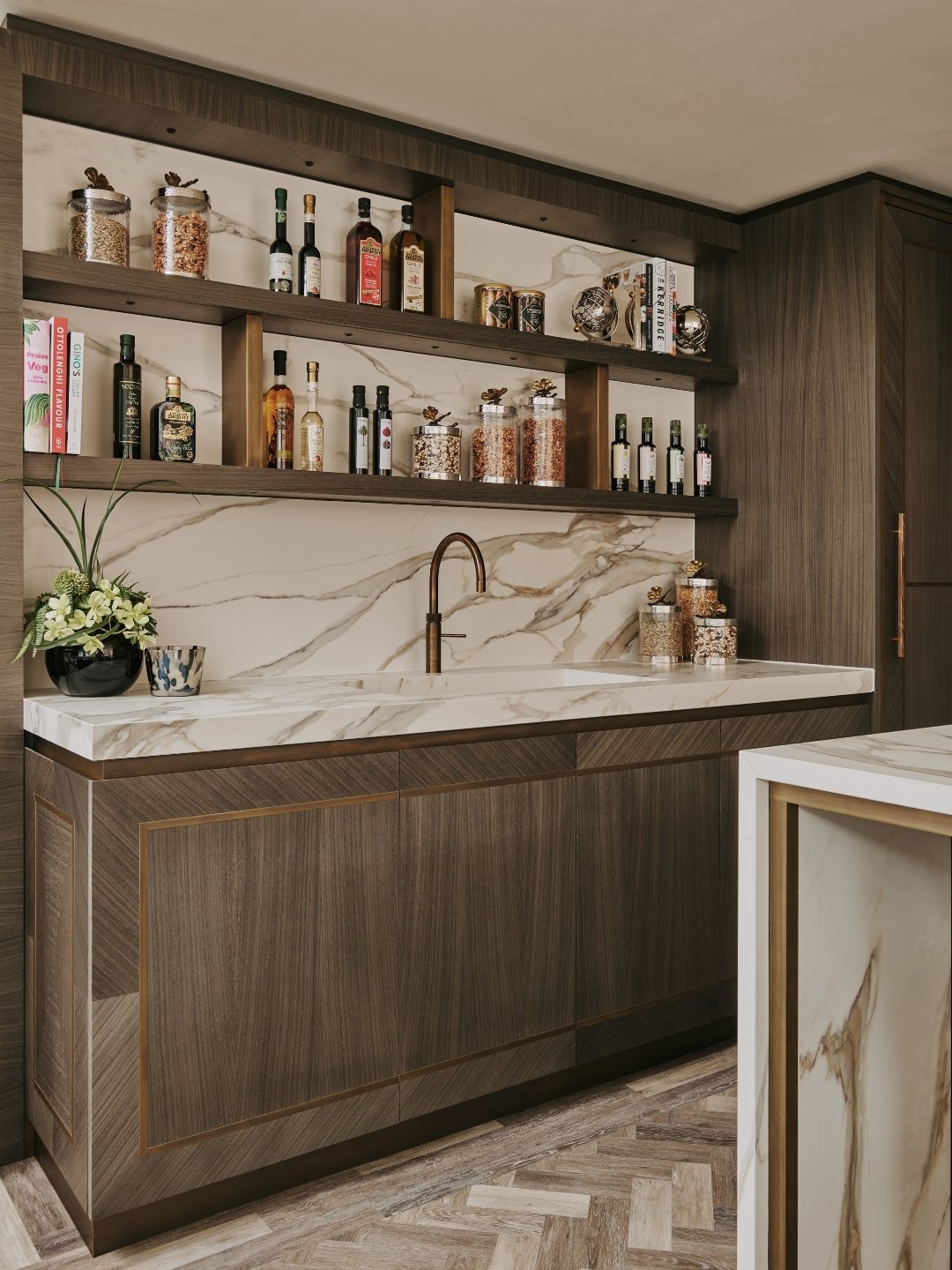
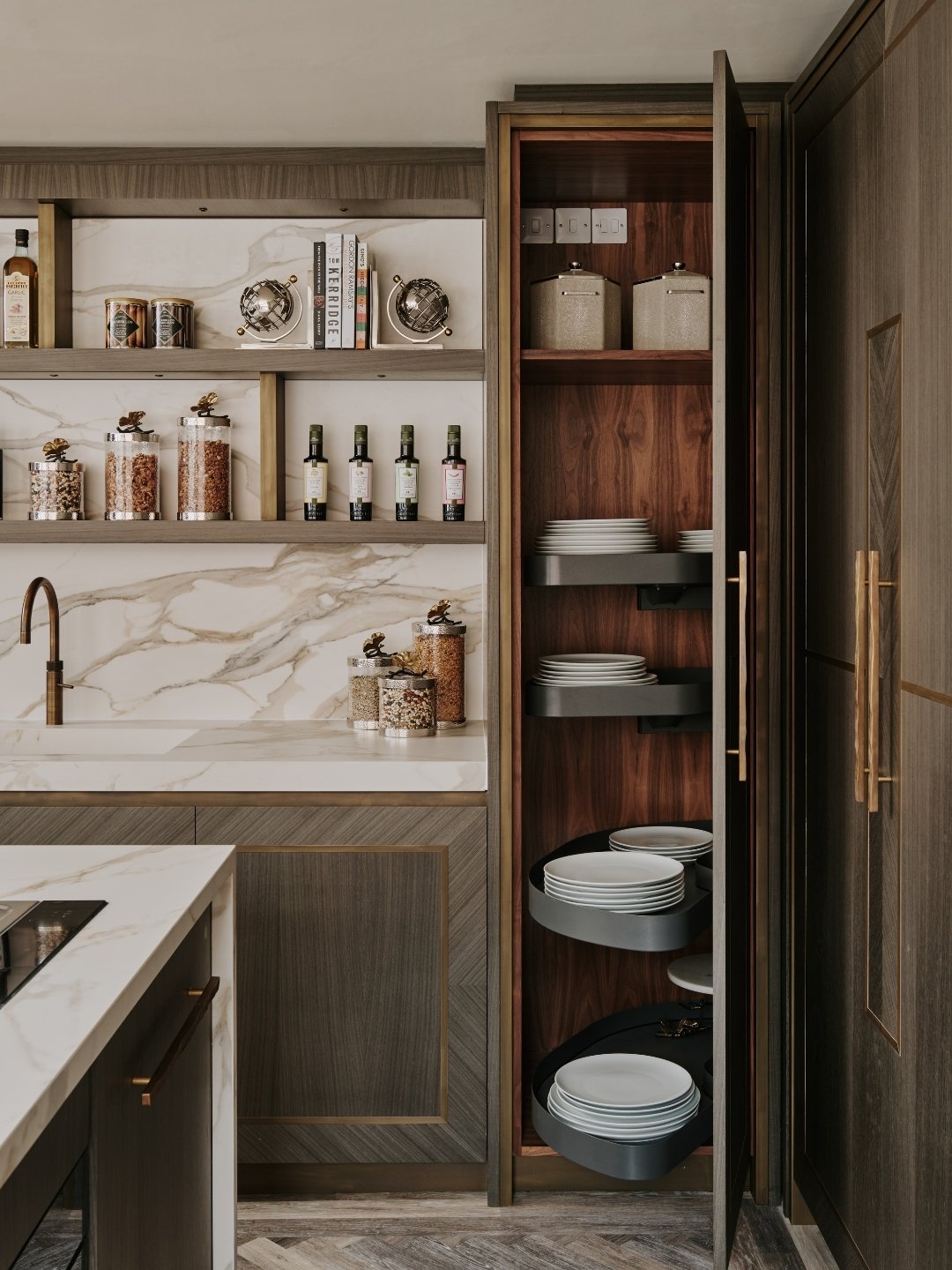
About Ledbury Studio
Charlie Smallbone needs little introduction. The founder of iconic brand Smallbone of Devizes, he has been pushing the boundaries of kitchen design for over 40 years. Charlie’s latest venture, Ledbury Studio, was born of his desire to harness the beauty of original materials whilst creating practical kitchens that exude style and elegance.
If you’d like to feature your product news here, get in touch to find out more.
If you’d like to become SBID Accredited, click here for more information.
We are all increasingly aware of the importance of sustainability in every aspect of our lives – and lifestyles. Sustainable development in design is no exception. So, we asked the team at Mark Taylor Design to discuss this further:
The concept can be interpreted in many different ways. But we like the clarity of the Brundtland Report’s definition: “Sustainable development is development that meets the needs of the present, without compromising the ability of future generations to meet their own needs.” To achieve this, planning and preparation is key. Accordingly, we are seeing a huge demand for sustainable design services, as more and more clients prioritise sustainable development goals for their homes.
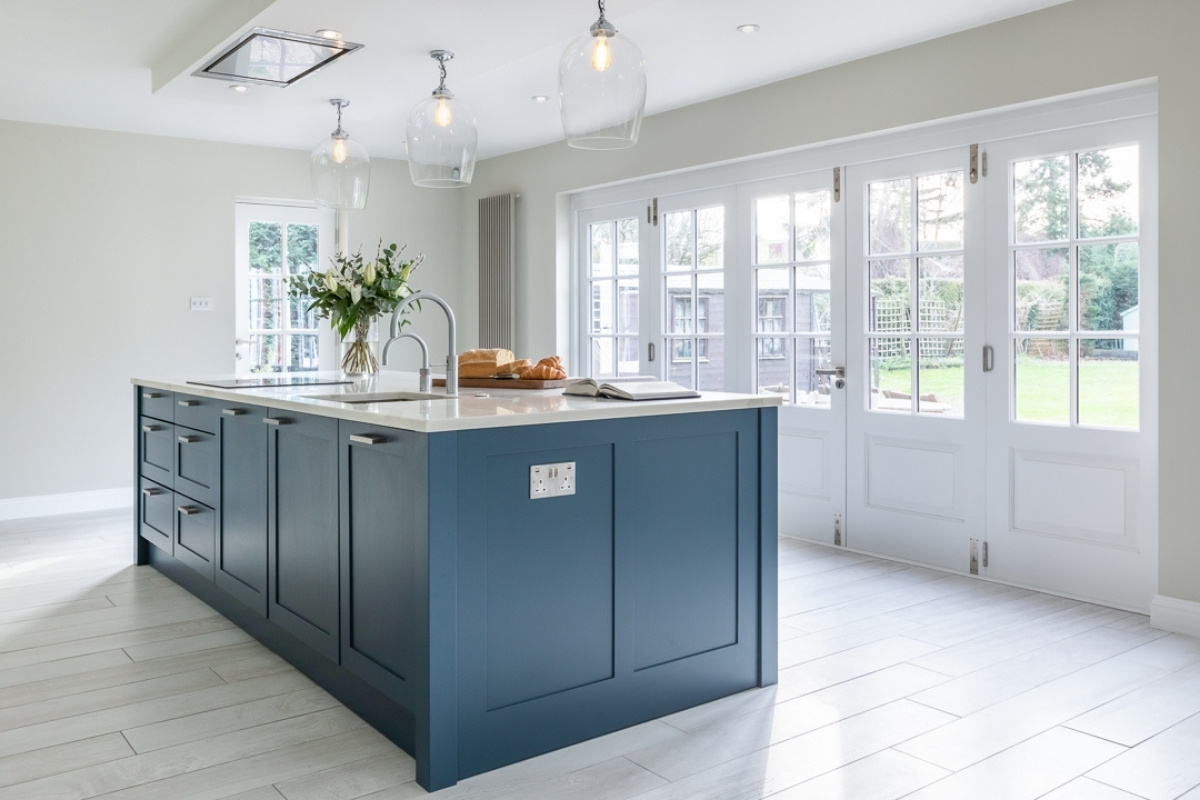
The rise of sustainable design
There are many reasons why sustainable development/design has become so important. First and foremost, it helps to lower negative impacts on the environment, and improves building performance. It minimises waste. It improves the value of your property – and, crucially, creates a healthy and productive environment. The COVID-19 pandemic has certainly shone a spotlight on the importance of being more thoughtful about ourselves and our environment. It has also transformed how we view our homes – and what we want from them. Fortunately, this sea of change has coincided with an increase in the quality and quantity of sustainable designs available, both inside and out.
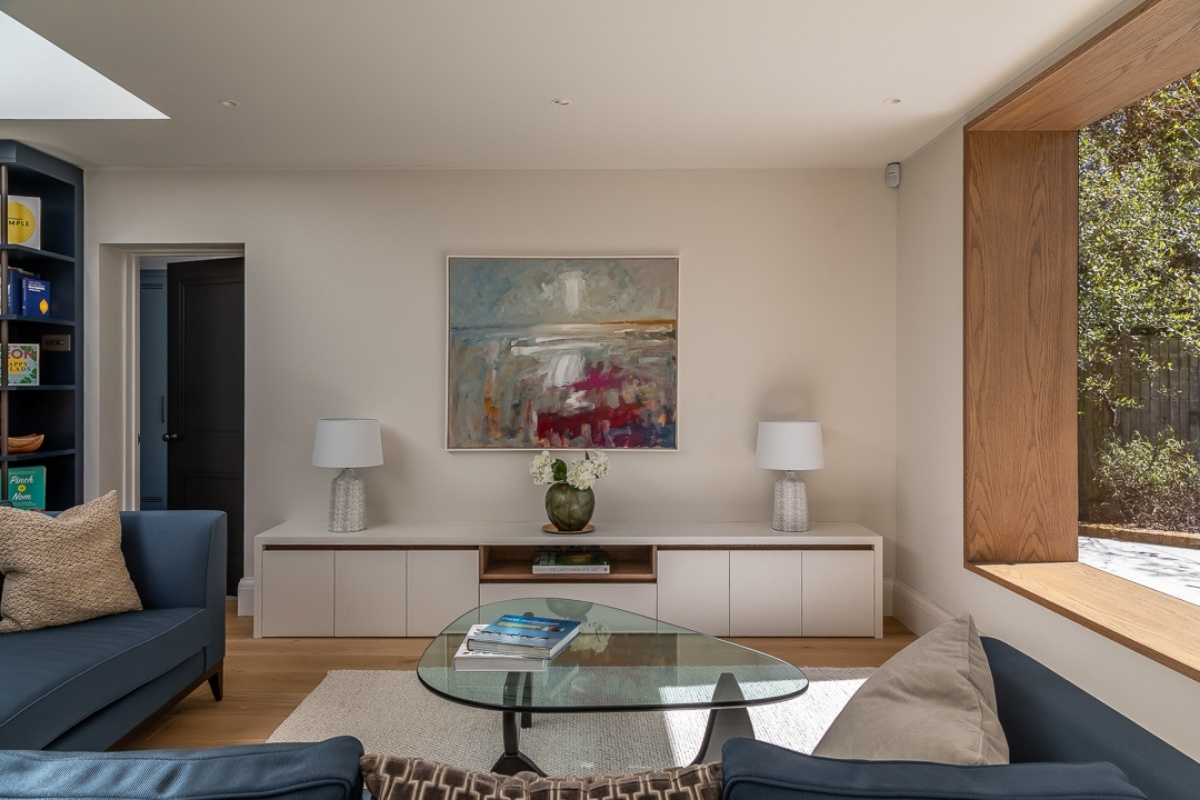
New expectations
The events of the past 18 months or so have had a profound effect on home design. There's no doubt we have changed the way we live – and the way we want to live. After all, they say that necessity is the mother of invention. “I think that people have learnt to become more self-sufficient, largely because they have had to!”, explains our director Mark Taylor. “People have also reallocated their budgets. Foreign holidays might not have been possible, yet renovations have skyrocketed. Then, of course, there’s the working from home phenomenon. This has prompted people to use their properties very differently; this is not just in terms of adding another room or a home office in the garden.”
Working from home has definitely made us much more aware of the space we have, and how best to use it. It has prompted many people to finally get round to home improvements which have long been languishing on the back-burner. In turn, trades have become so busy it’s now difficult to get renovation projects complete without booking well in advance.
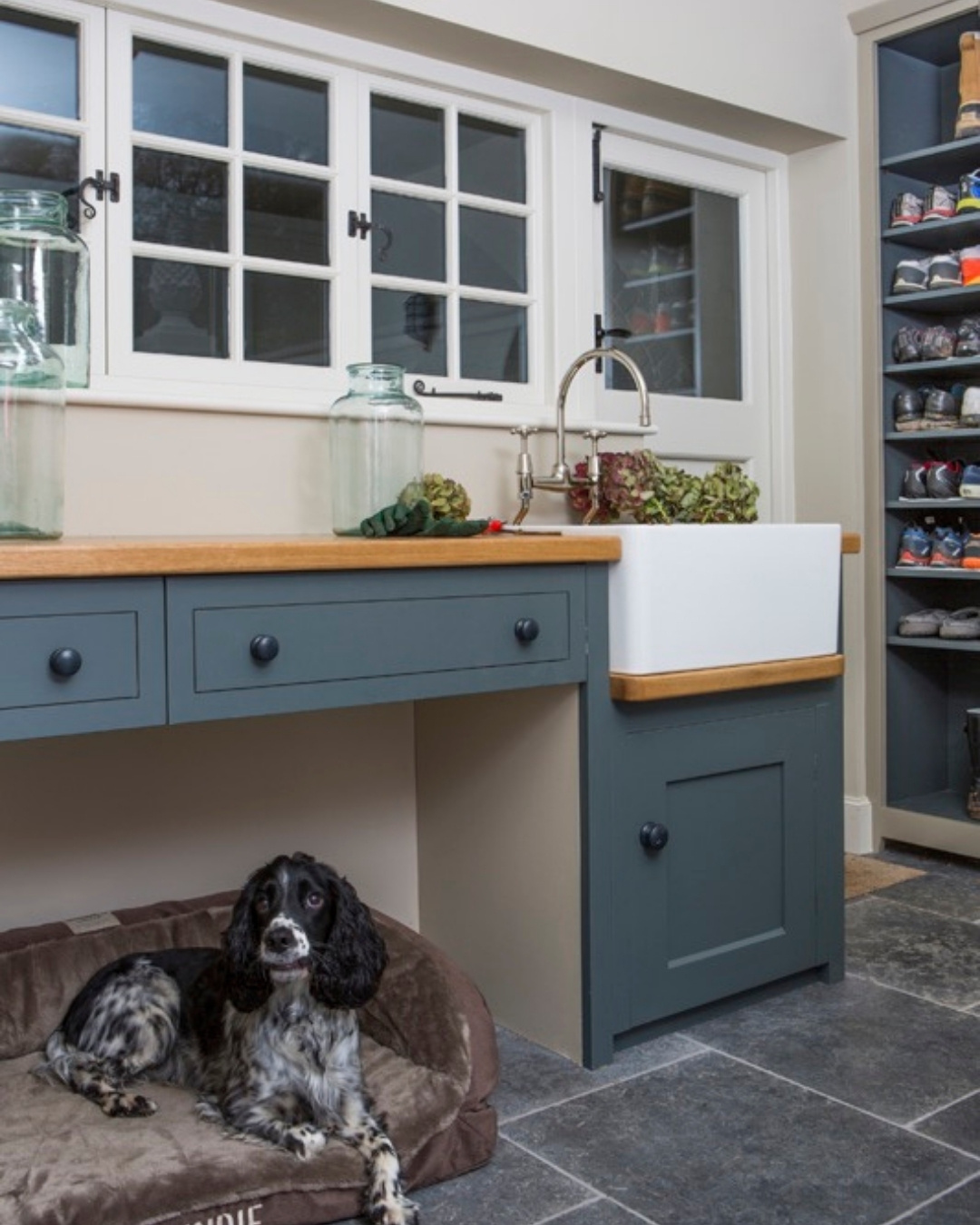
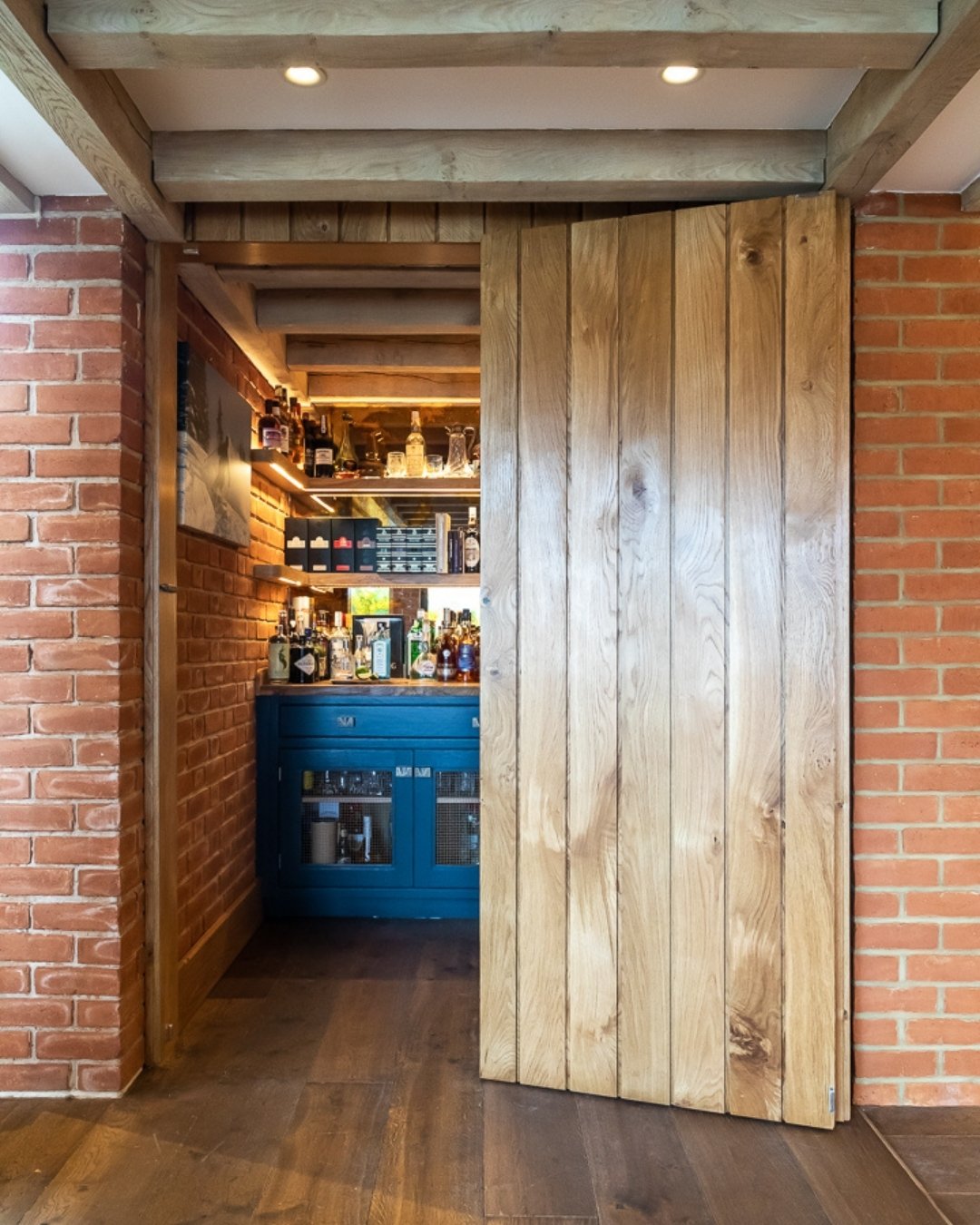
Family and wellbeing
Done properly, sustainable development isn’t just good for the environment, it enhances personal wellbeing too. Spending so much more time at home and with loved ones during the pandemic has led to a marked recalibration of priorities. Many people have reassessed the importance of family life, health and happiness and have made changes to their home accordingly. This might include creating space to decompress, and changing lighting and colours. Another key development is the rise in pet ownership. This had led to the creation of more/different spaces in which to accommodate them, such as boot rooms and utility areas.
Sustainable development is a win for the environment, your personal and professional lifestyle – and your wallet. Updating your interiors, installing a new kitchen or bathroom, or even adding another room such as a properly insulated orangery, can all add significant value to your property. Before you proceed, however, it’s important to identify your key objectives. For some people, a sustainable design project is all about ‘opening up’ existing space. For others, the priority is to create more rooms, to accommodate multi-generational living and working from home. Design professionals can best advise how to do both, for example, by creating hidden break-out spaces, sliding doors, and so on.
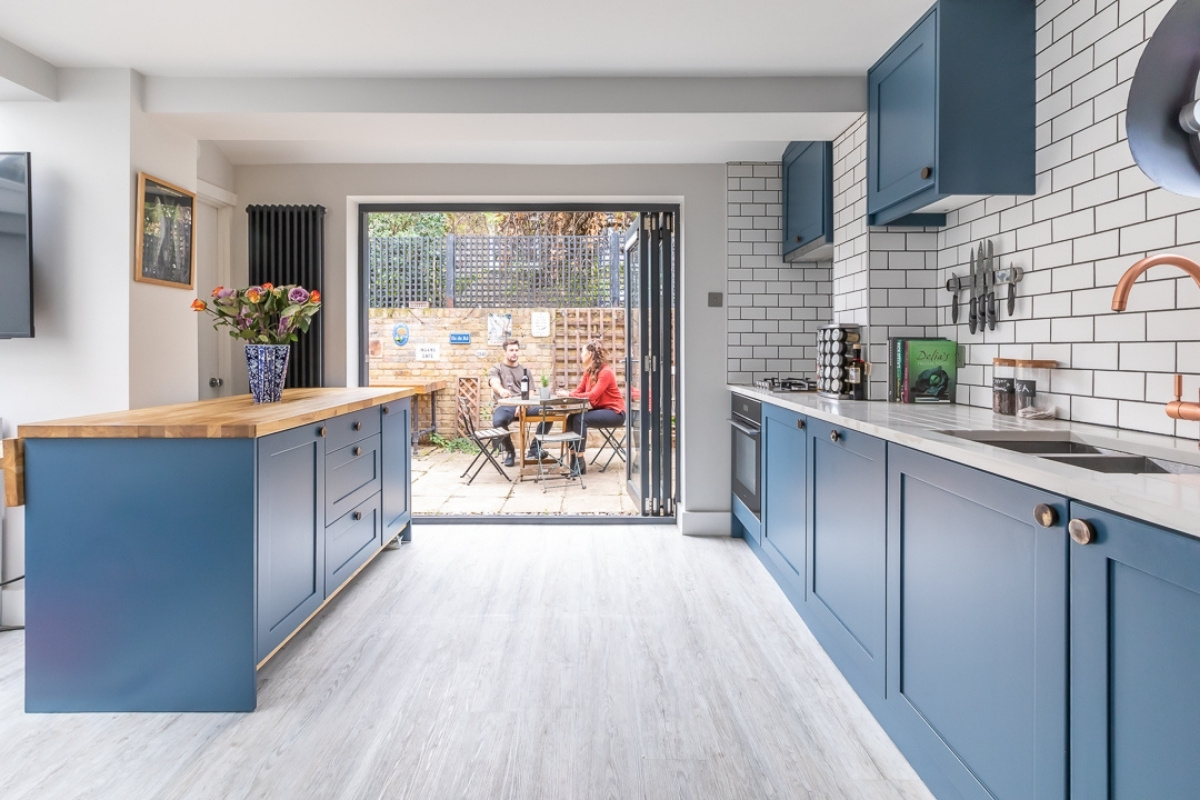
Sustainable materials
Many synergistic elements combine when creating and implementing a successful sustainable development interiors project. These include factors such as size, location, layout, insulation, lighting and energy. The use of sustainable materials has also become increasingly popular, as clients become more aware of the environment and climate change – which has been hugely publicised throughout the pandemic. With so many of us working from home over the past 18 months, there was a considerable decrease in global emissions. This in turn has made us all question what else we can do to help. Popular design trends include carpets made from recycled plastics, concrete work surfaces, large sheets of recycled ocean plastics converted into work surfaces and wall coverings, and eco paints.
Graphenstone has a great range of ‘green’ paints and coatings. This eco-friendly range of products includes natural elements that help to purify the air we breathe inside our homes. It’s recommended for indoor enclosures, hospitals, nurseries, retirement homes, hotels, environments and rooms for babies and children. It’s also suitable for people suffering from chemical intolerances. Their paints even help limit pathogens derived from Sick Building Syndrome and prevent the growth of mould, fungi and bacteria.
High quality, recycled and recyclable plastic is another sustainable material we are incorporating into many of our new kitchen designs. The Good Plastic Company aims to transform waste into beauty. In fact, its unique technology re-uses up to 75% of existing types of plastic. It uses post-industrial and post-consumer plastic waste to create stylish, modern wall panels, shelving and storage.
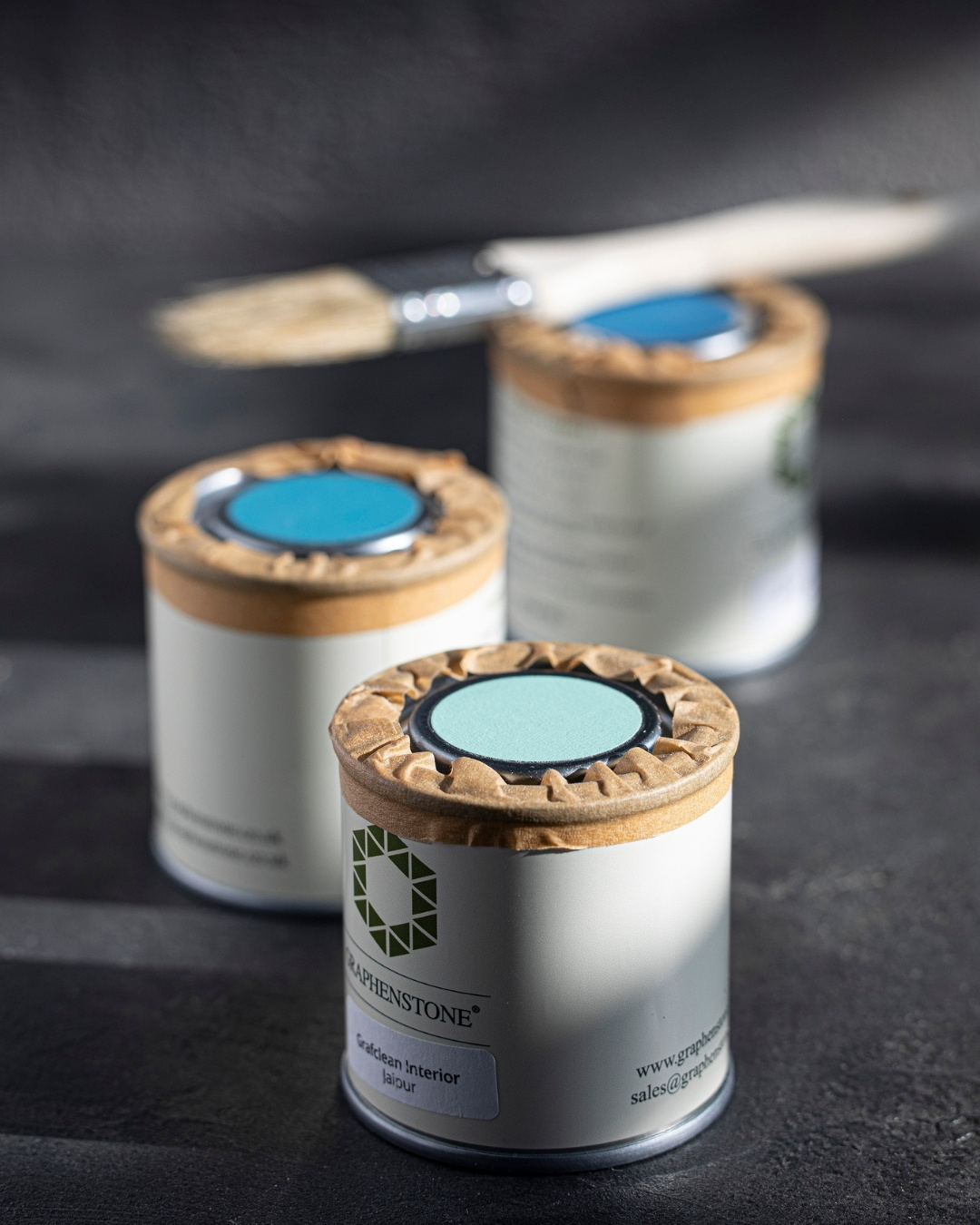
Back to the future
Looking ahead, we think sustainability will continue to be a key theme within home décor. Recycling has become far more popular and prominent. Many people are now thinking of clever and unusual ways to upcycle and recycle, in order to minimise waste and be kinder to the environment. We also think smart homes will go much further than simply featuring stand-alone devices. They will provide greater insights into energy use that will allow us to become more energy-efficient and mindful of ecological factors.
All the senses will become increasingly important. Clients are becoming more conscious of how sound, textures and lighting affect mood and productivity. It was interesting to see that designing for wellbeing was a common theme at Decorex. We noticed nature and biophilic design principles have inspired many companies and brands. Wallpapering a whole room – as opposed to a token feature wall – seems to be back on-trend. Also, beautiful texture wallpapers are now featuring eye-catching pops of colour. There is definitely a shift towards warmer and more welcoming textures and patterns. Gone are the days of grey schemes. Colour is definitely back and here to stay.
About Mark Taylor Design
Mark Taylor Design is a British manufacturer of superlative bespoke furniture, cabinetry, specialist joinery and Interior Design. Our passion is to make spaces work – to create extraordinary spaces which are as personally relevant to their users as possible.
If you’d like to feature your product news here, get in touch to find out more.
If you’d like to become SBID Accredited, click here for more information.
Arteriors is delighted to introduce its latest collaboration collection with renowned US interior designer, Celerie Kemble. The collection debuted at London Design Week as part of Arteriors’ Spring Summer 2022 launch. As part of the brand’s successful Guest Designer programme, the collection features a series of furniture, lighting and tabletop accessories, with pops of wonderful, whimsical colour and repeated use of natural materials.
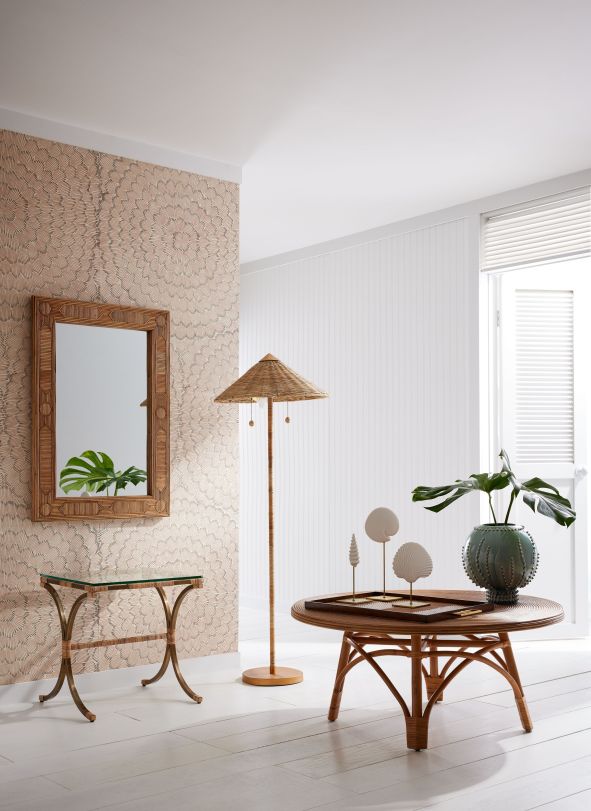
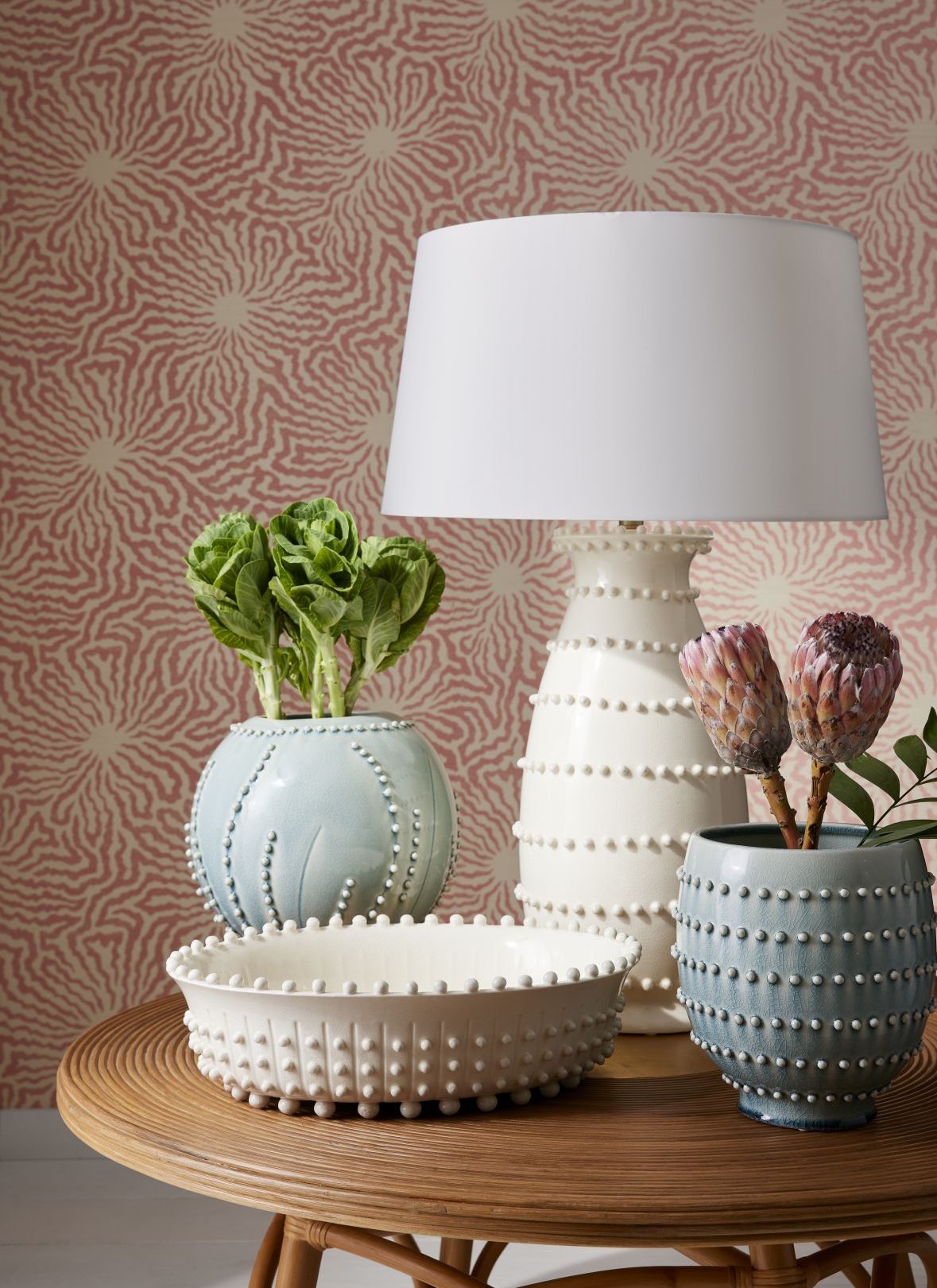
“Great design is at the core of who we are, which is why we've tapped some of the most prolific interior designers with whom to collaborate as part of our guest designer program. Each designer brings a new perspective that marries their unique design philosophy with the Arteriors aesthetic” - Arteriors Design Team.
As Celerie’s second collection for Arteriors, the range is built upon a desire to blend a range of materials, texture, soft colour and different finishes to create a playful collection for spring.
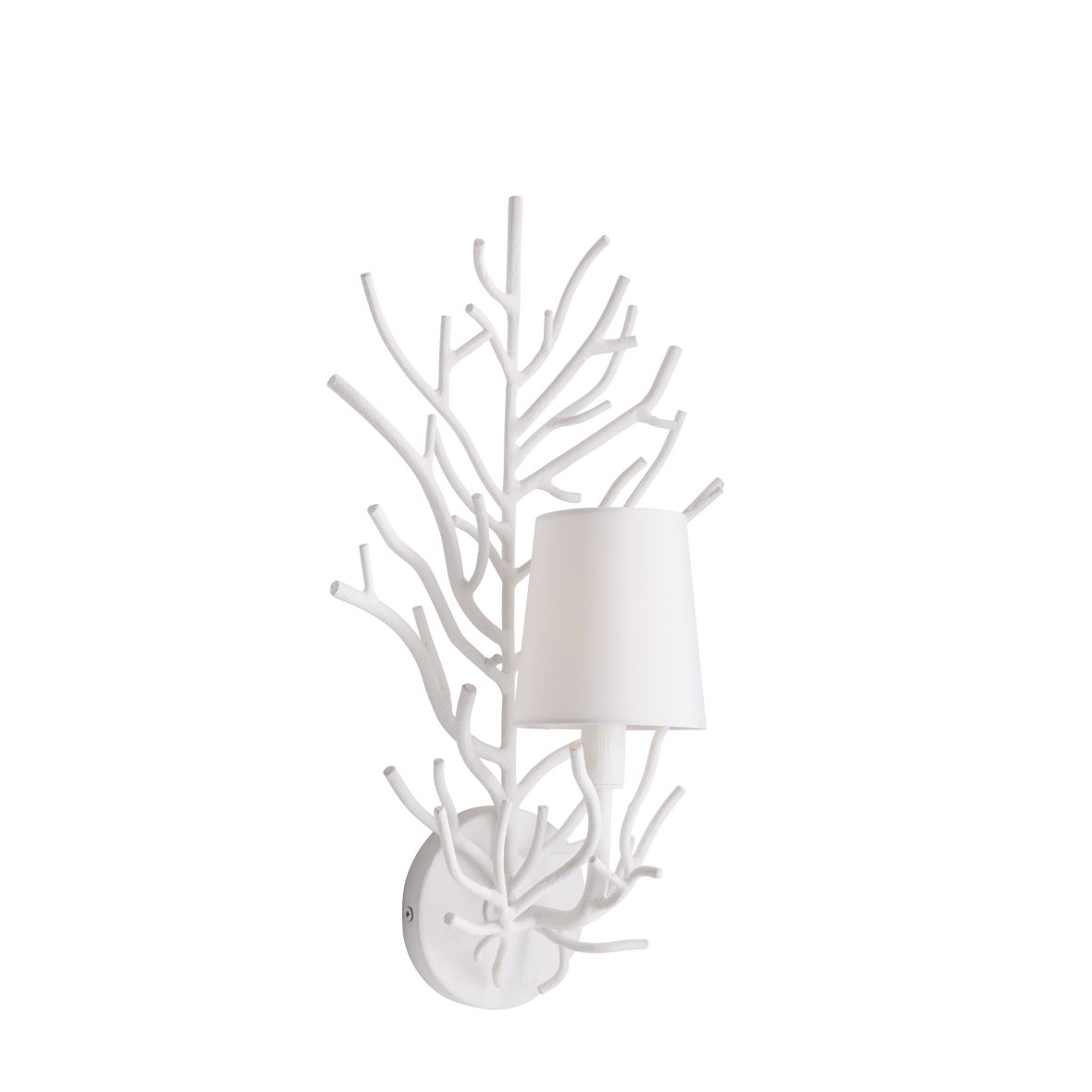
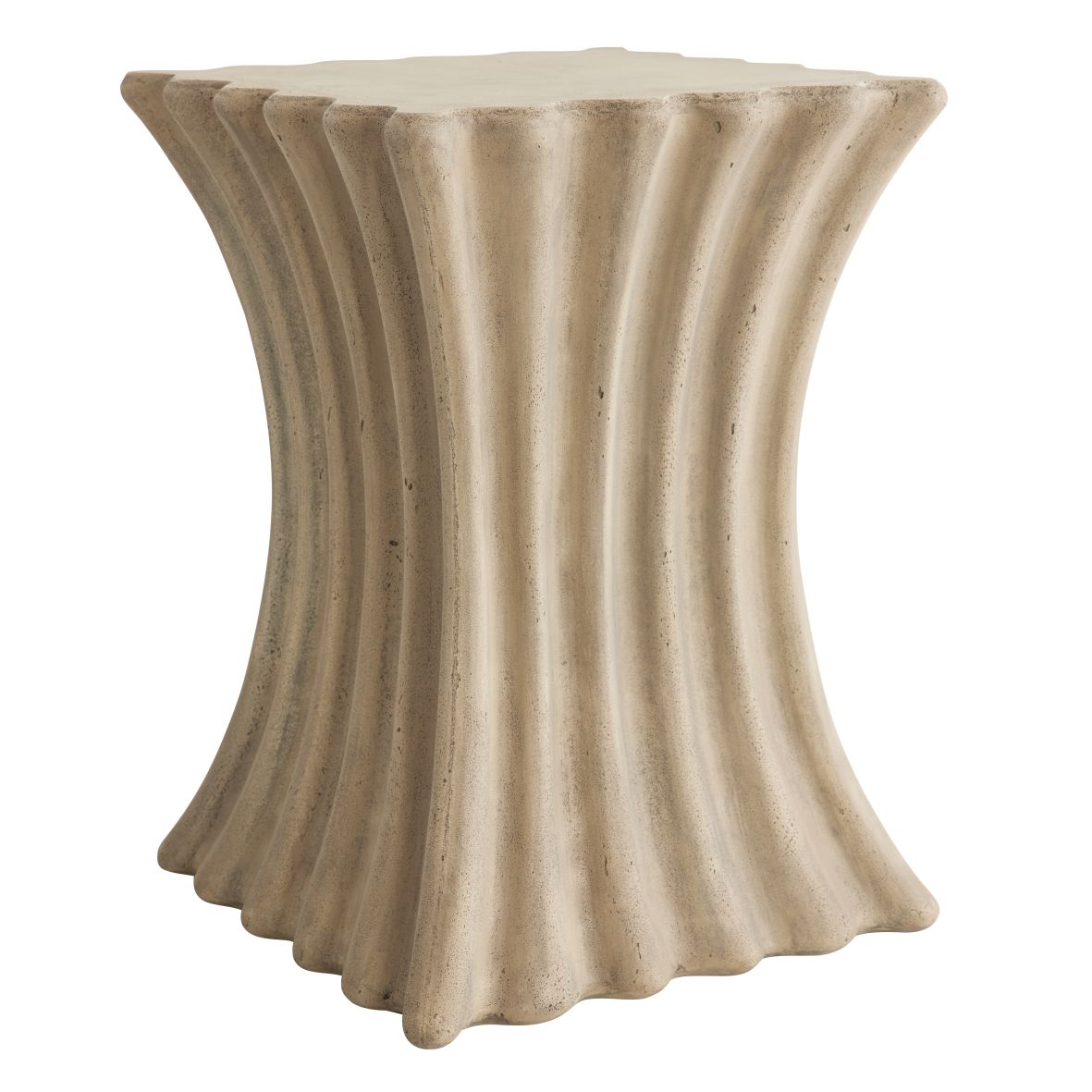
Taking inspiration in both colour and material from nature, and particularly the warmer climates of the tropics, the range is filled with playfully textured ceramic vases and lamps, polished rattan tables, mirrors, trays, and other statement pieces, in natural hues and luxe materials that lend a traditional-meets-tropical allure. The palette incorporates muted hues, pale woods, and shell motifs to mimic sandy beaches, and pastel skylines of a springtime abroad.
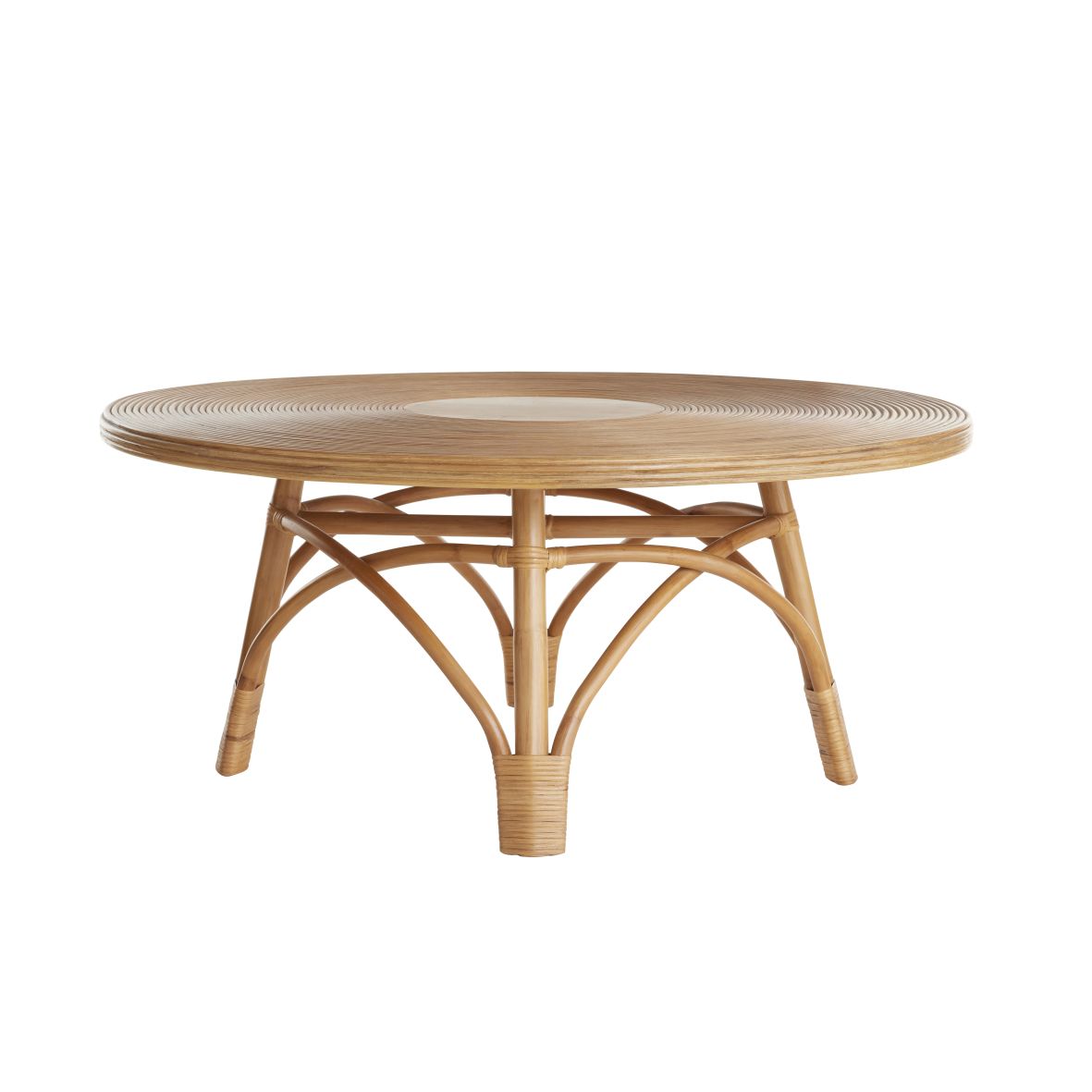
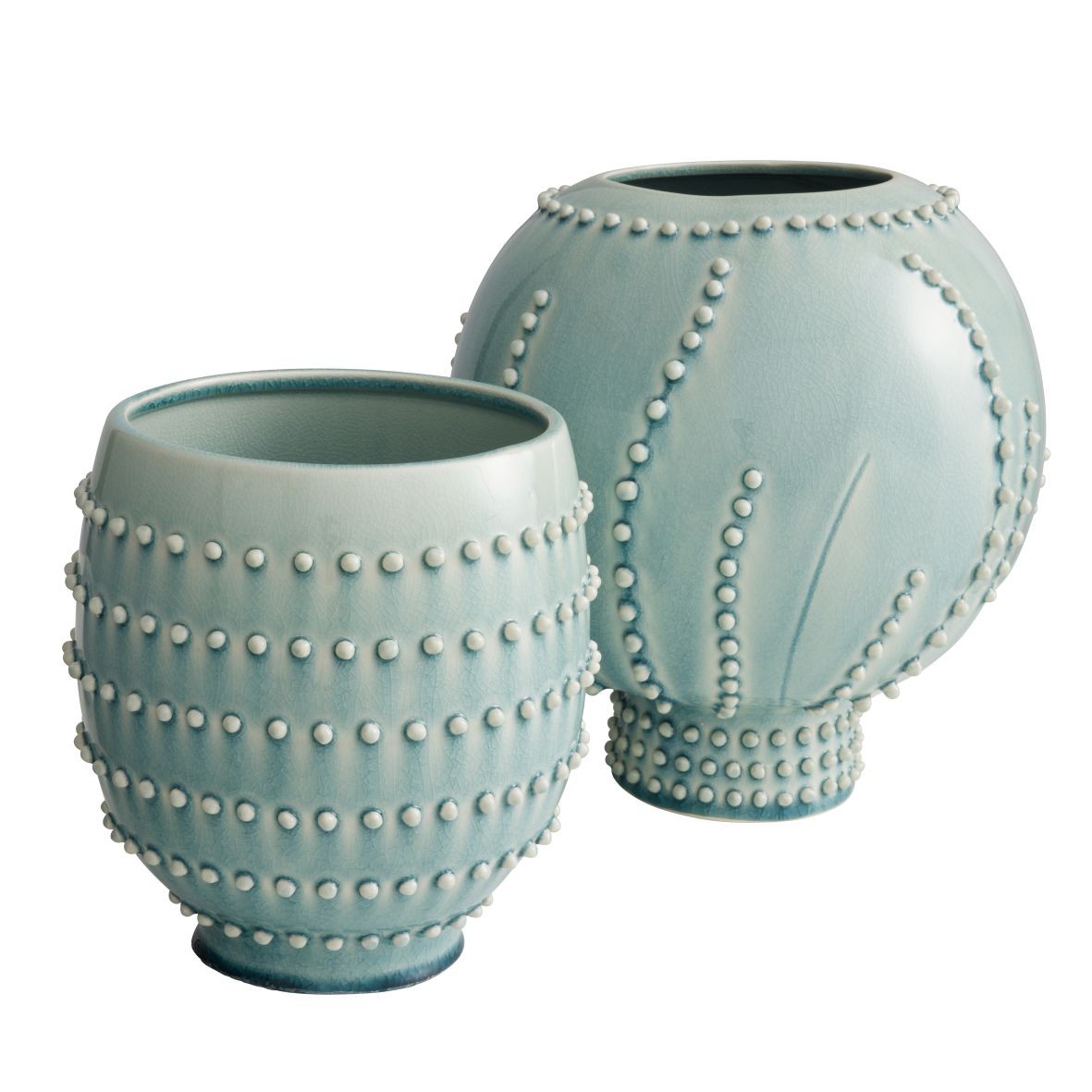
Celerie Kemble on the collection:
“In most of my work, I’m trying to find ways to add levity and sweetness, each piece I have designed as part of the collection is very functional, but adds a note of whimsy to your décor. I believe that it is in the quirks that things become distinctive, that interiors become animated by life and nourished by their inhabitants.”
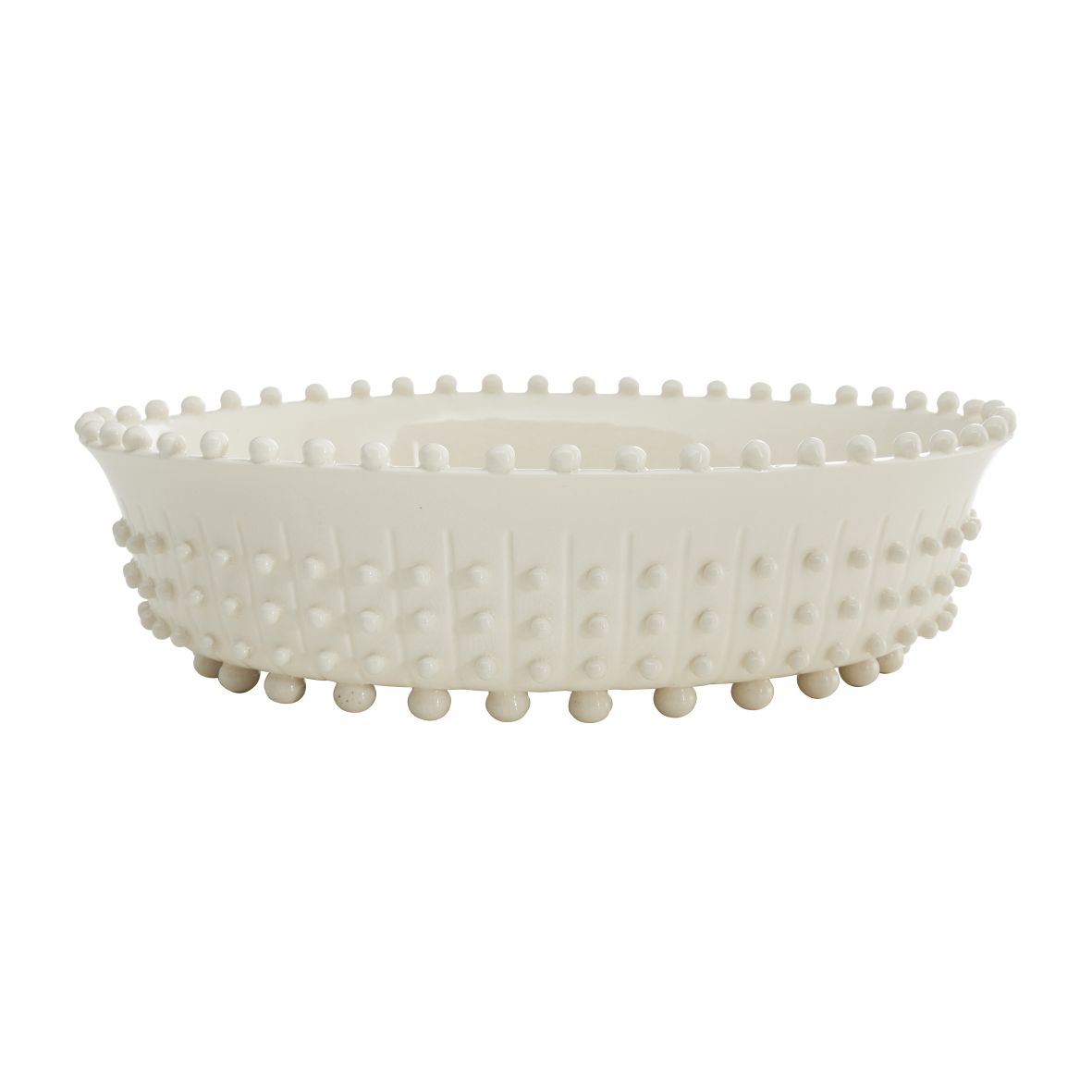
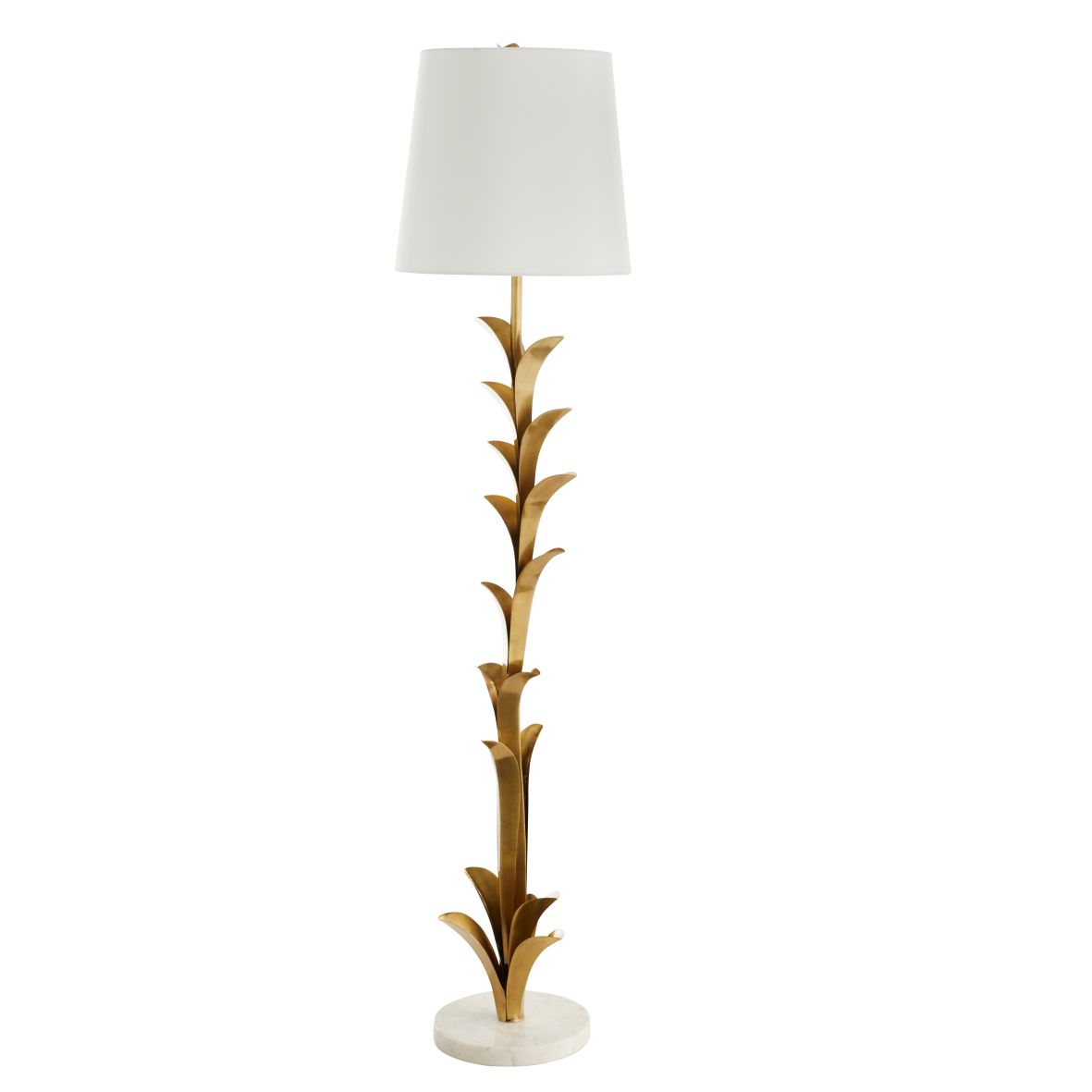
Browse items from the collaboration online at www.arteriorshome.com or visit the London showroom to see the designs first hand.
About Arteriors
For over 30 years, Arteriors delivers impeccable style and artisanal quality craftsmanship within the lighting, furniture, wall décor and home accessory categories to discerning customers worldwide. This three-decade journey in pursuit of extraordinary product - from the understated to the unexpected - had been and remain at the core of what Arteriors do each day. Arteriors' business has matured and expanded into a timeless lifestyle brand that has become premier resource for interior designers and retailers worldwide.
Today, Arteriors continues to reinterpret materials, forming objects of perfect proportions and scale, resulting in bold interiors that bring ease to everyday luxury.
If you’d like to feature your product news here, get in touch to find out more.
If you’d like to become SBID Accredited, click here for more information.
In this week's interview with SBID Awards Product Design judge and Director of Design at IHG, Henry Reeve talks about the most important design and functional aspects of hotel interiors, key product specifications that influence choice and shares his personal sources of inspiration.
How can interior design influence greater guest experiences in hotel environments?
Good Interior Design I feel can make or break a guest experience. You need both form and function, yes of course we want to wow our guests with incredible atmospheres rich in detail and finesse but there is little point creating a spectacular environment if the space just doesn’t ‘work’. It's easy to create that spaces that impress but are poorly equipped or ill-thought through and don’t accommodate guests needs and functions. I think one of the most important aspects of hospitality interior design is to ensure our guest don’t ever feel stupid. Our guests are in an unfamiliar environment, and we want them to feel at home, to relax and unwind. Designs must be intuitive, how many times has one had to desperately search for the light switch, or struggle to find a plug socket or worse cant find the wardrobe!
How do you approach product specification for hospitality projects? What are your key considerations?
Specifying product particularly recently has become even more tricky, there is a wealth of options out there but so many factors go towards influencing choice, yes of course shape and form but external factors are now more than ever influencing specification, lead times, environmental impact, over-use and of course cost are playing a huge role.
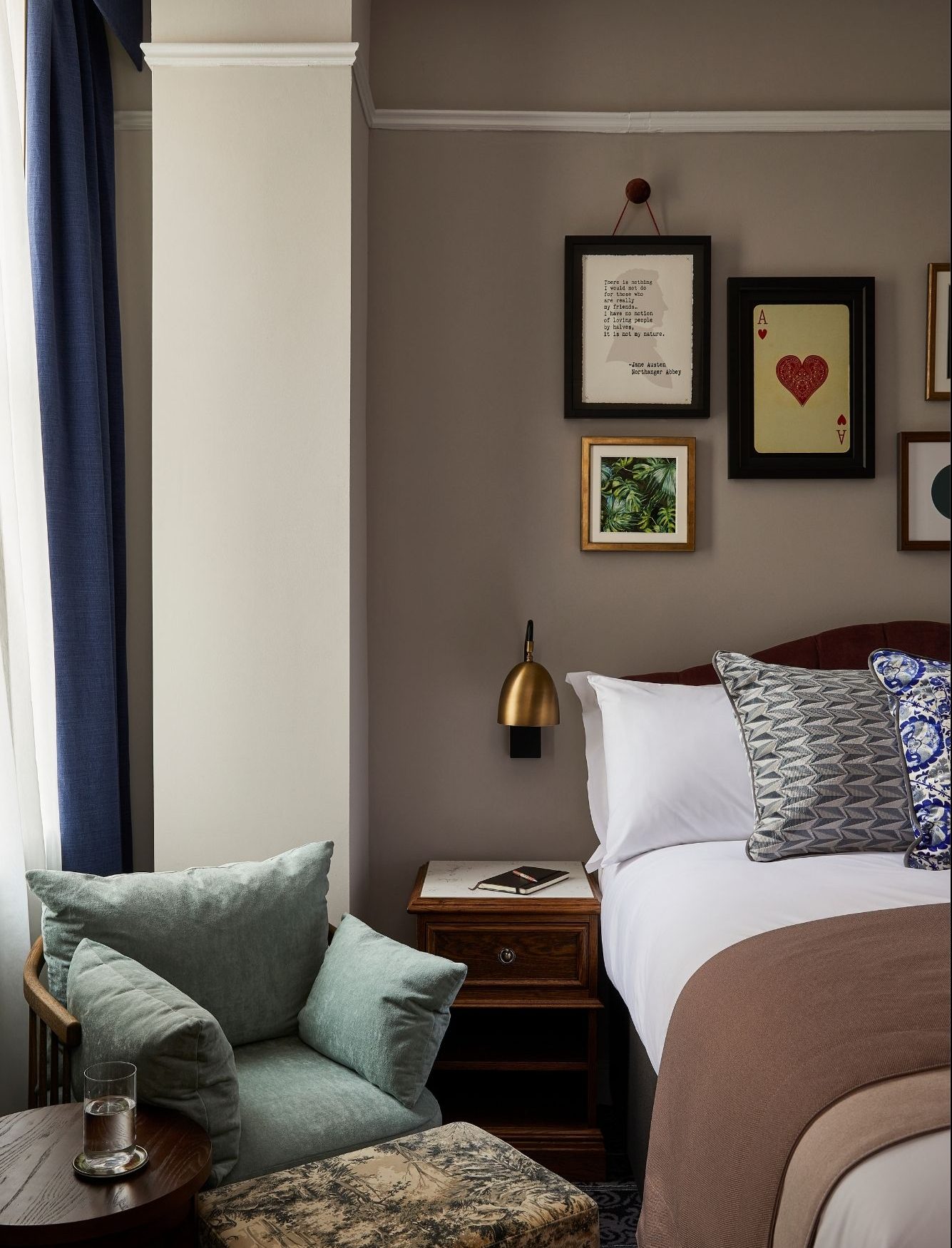
Why is product innovation so essential for the interior design sector, and how can we expect the relationship between manufacturers and designers to evolve going forward?
Constant innovation is mandatory in this sector, the world is moving fast and constantly looking to what’s next. Environmental factors are becoming ever more influential on both consumer choices and economic too. I feel this will become in time a far more important aspect of specification than it perhaps once was. Product life-cycle too is something I am interested to see how the wider industry addresses, how is product recycled/re-used when coming to the end of its life?
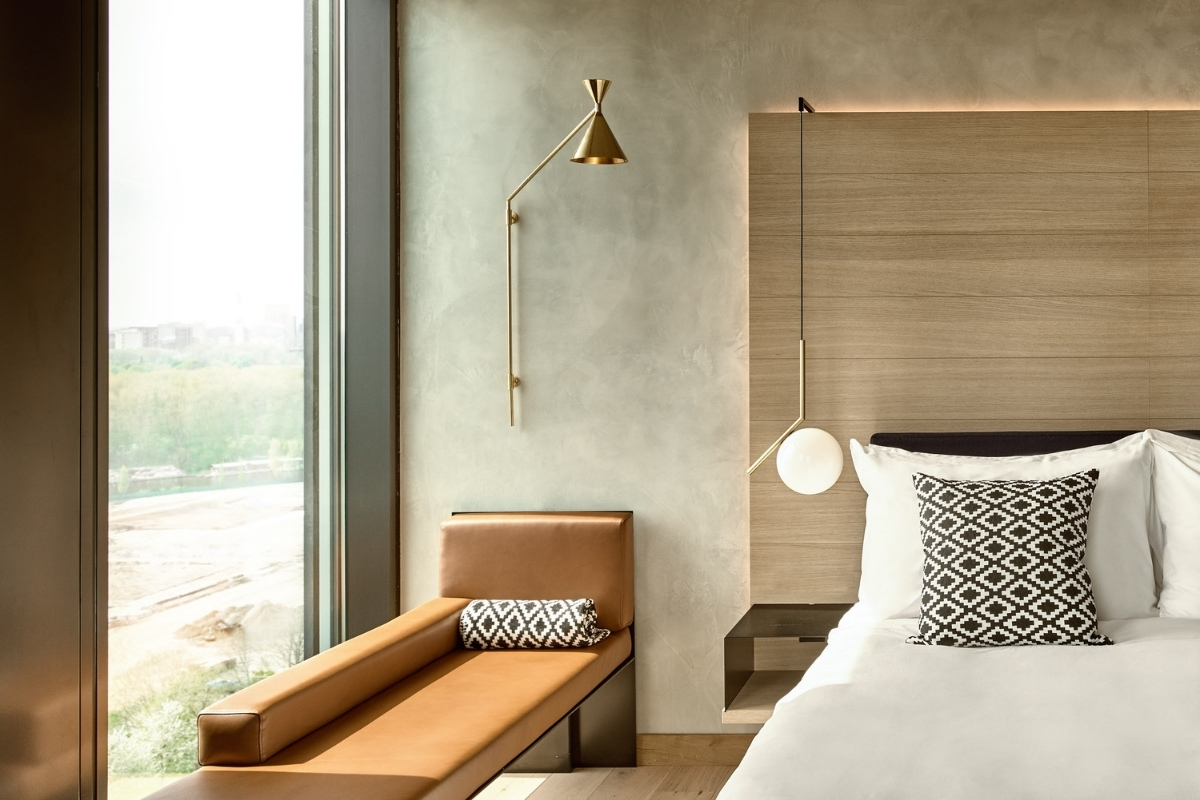
What inspires you both professionally and personally?
Inspiration comes from anywhere, but I must admit that Travel is certainly one source of inspiration to me that I am thrilled is now possible once again. To experience how different cultures use spaces opens ones eyes to new possibilities.
Finally, what advice can you give to designers entering the SBID Awards?
Put your best work forward, ensure photography is exemplar and try to explain your work in a succinct way. I look forward to seeing some wonderful entries!
Questions answered by Henry Reeve, Director of Design, IHG.

I’m Director of Design at InterContinental Hotels Group focusing on Kimpton and Hotel Indigo. Previously I was Associate Director at forpeople, and a Creative Director and Designer at a number of guest experience, retail, and event agencies based across London. I have worked for clients as diverse as Nike, Lotus, Peugeot, Mulberry, Bollinger, Pfizer, Coca-Cola & McDonalds. I trained as a Mechanical Engineer at Bristol University and as a Designer at Central Saint Martins, in my spare time I love to make things.
This week’s instalment of Project of the Week series features a dual café design by 2021 SBID Awards Finalist, 4SPACE Design.
SBID Awards Category: Restaurant Design
Practice: 4SPACE Design
Project: Coffeetea
Location: Dubai, United Arab Emirates
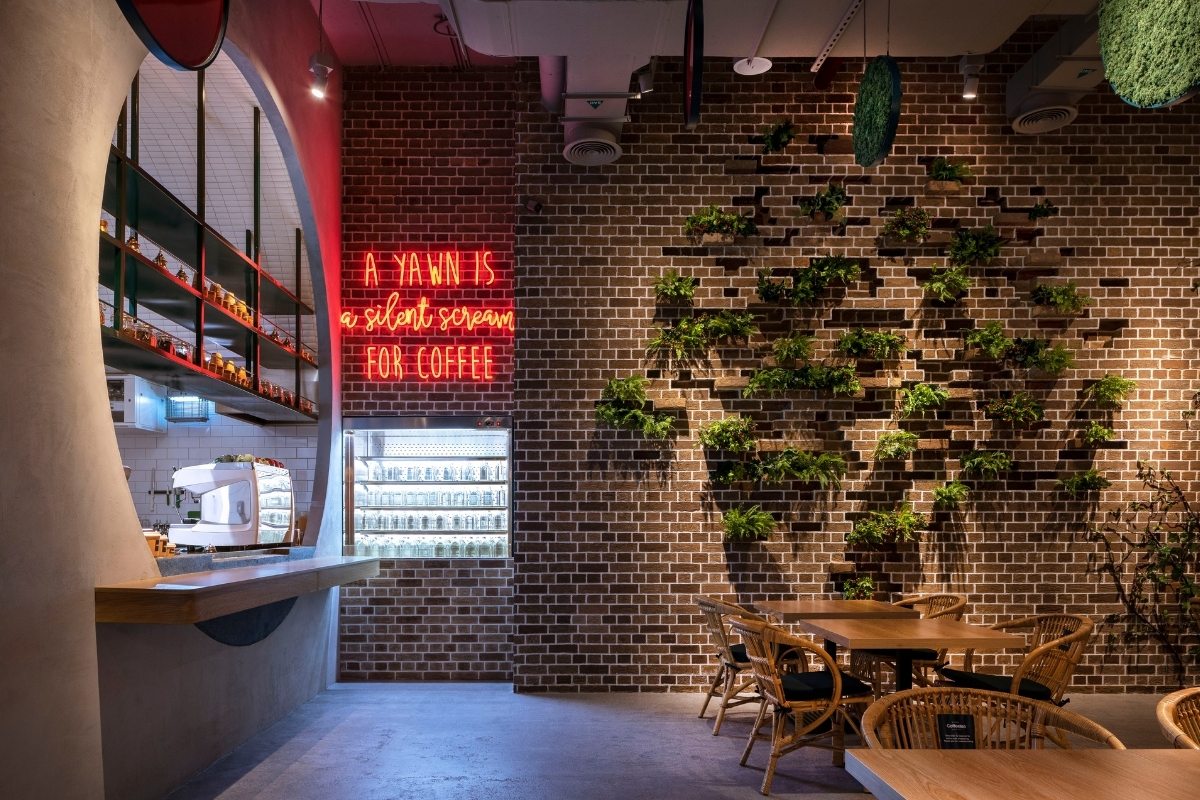
What was the client's brief?
The client wants to elevate the interiors of Coffeetea's new branch in Dubai International Financial Center (DIFC) that will reflect its branding identity and the story behind the name “Coffeetea”.
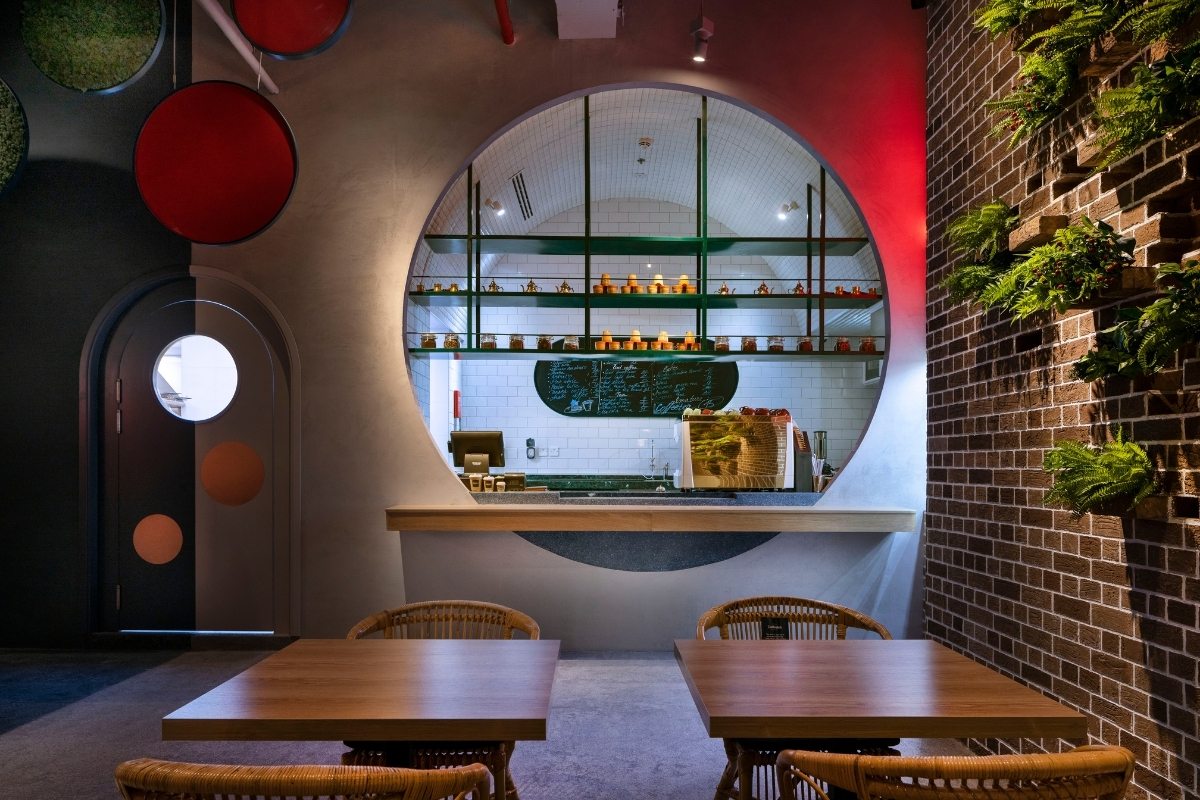
What inspired the design of the project?
Coffee, tea, or both? Give it a gentle stir and get ready to indulge your taste buds in a unique blend of taste and flavors. This unique perspective gave 4SPACE an idea on how to elevate the interiors of the new branch of Coffeetea located at the financial hub of Dubai, DIFC.
This 200 sqm café has a split concept that is derived from having a split personality between a coffee lover or a tea lover. The green represents tea and the brown represents coffee. It’s a very literal translation but the result is outstanding. A distinctive visual style that creates an inviting destination and international appeal. This café is designed to offer an experience that disconnects customers from the hustle and bustle of everyday life. The ceiling design was inspired by the coffee bean in its original form while it’s on the Arabica Tree; the green preserved moss replicates the leaves while the red glass characterizes raw coffee beans. On the floor, we used a German Technology called Stein Art, an exclusive sandstone that gives the space a distinctive mood.


What was the toughest hurdle your team overcame during the project?
Aside from the tight deadline, the client has a tight budget as well. As designers, it is our responsibility to look for alternative solutions that will suit the client's budget but are still aesthetically appealing and functional.
We sourced materials which are available locally and are sustainable (with low VOC). We made sure that all the materials being installed are durable and as per the original design intent.


What was your team’s highlight of the project?
The symmetrical pattern of arches on the wall and the floor provides layers and design features that are very minimalist and refreshing. The façade projects a sense of grandeur welcoming the customers with a vivid and nostalgic color palette. There’s a feature for brick walls with recessed plants in the shape of a tree that promotes a biophilic approach. To add the feeling of an outdoor backyard, a window with droplets was created to deliver a cozy ambiance. The contrasting hard and soft colors and design details reflect the characters enhanced by the branding integrated into the café through the signage.
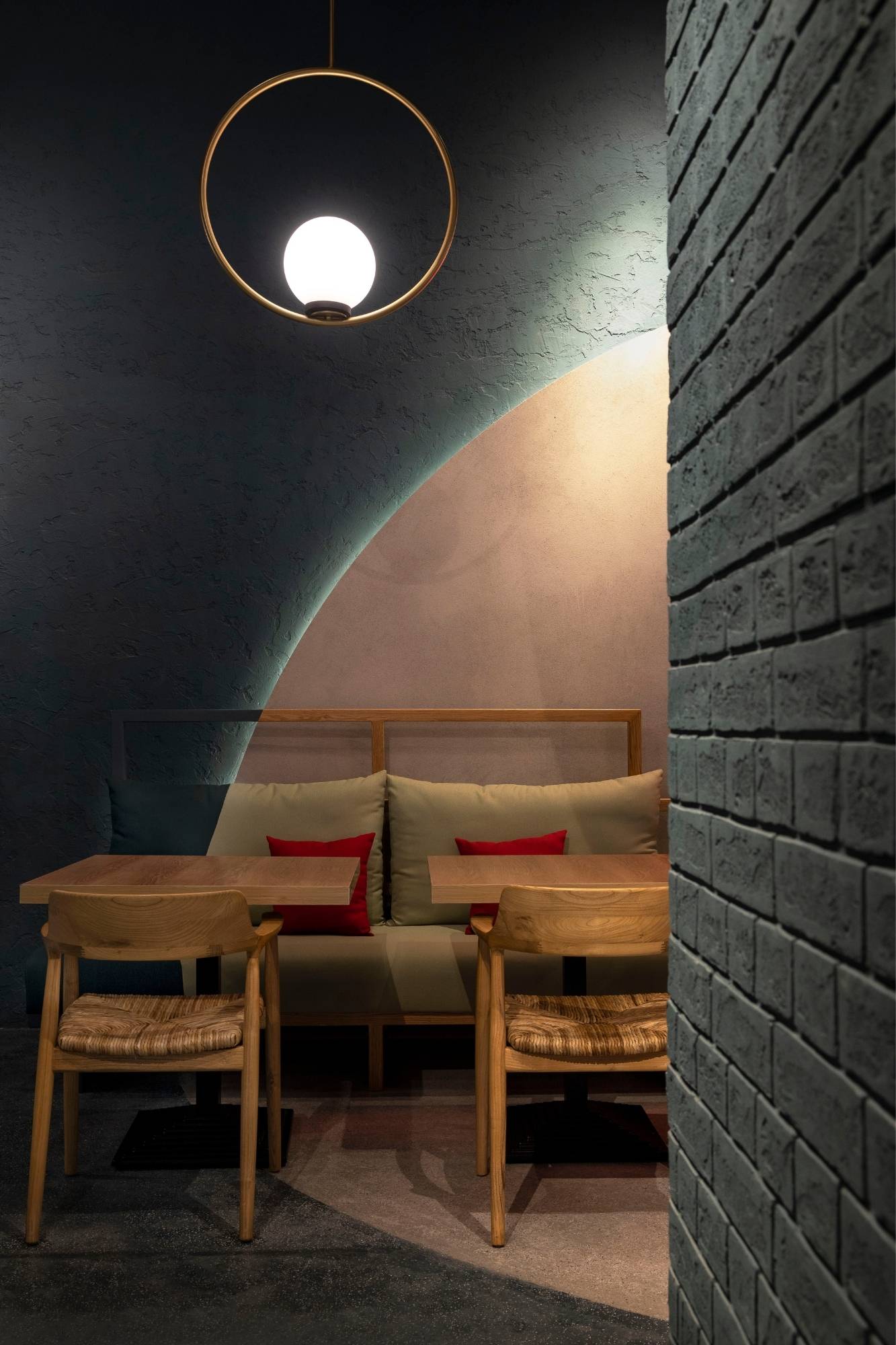
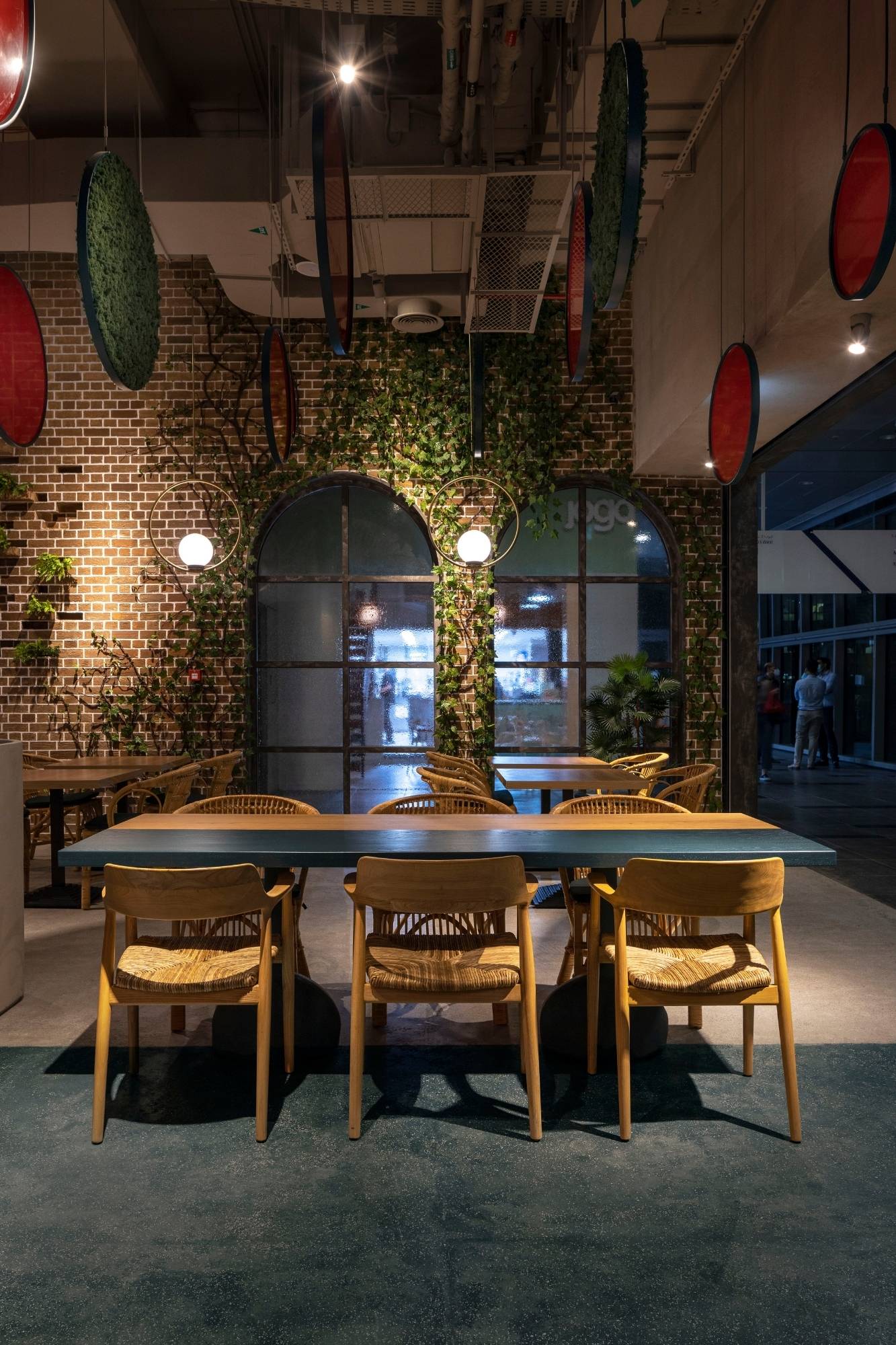
Why did you enter this project into the SBID Awards?
We’ve been participating SBID awards for 7 years, and our Co-founders are both SBID Members. We believe on its vision and so we are always proud to share our projects to the SBID audience, this time it is “Coffeetea”. 4SPACE have designed and created an imaginative and evocative space that has a relaxed and indulgent atmosphere; a hospitality experience infused with local café culture.
Questions answered by Firas Alsahin, Co-Founder, 4SPACE Design.
Opening in the heart of Clerkenwell’s design quarter during Design Week 2022, RAK Ceramics is launching their inaugural Design Hub – a go-to destination for designers, architects and developers looking to explore the possibilities of choosing RAK Ceramics products for their projects.

The Design hub will feature the first UK display of a brand-new collaboration with renowned fashion designer Elie Saab which will feature a range of edits from the Elie Saab Maison collection.
To mark the opening several renowned European designers will provide their Design Insight in a series of inspirational talks and seminars during Clerkenwell Design Week.
These include Giuseppe Scutella, who collaborated with RAK Ceramics on its luxurious RAK-Cloud and RAK-Petit collections and Federico Sandri, one half of the design duo behind the beautiful RAK-Variant collection. Guests at the Design Hub opening events can also hear from Patrick Norguet, on the thinking behind the RAK-Valet sanitaryware range.
Tours of the Design Hub will take place during the launch party on Tuesday 24 May, with guests invited to enjoy a cocktail and evening entertainment to mark the opening ceremony.
For a full list of events and to book visit the Clerkenwell Design Week website.
About RAK Ceramics
RAK Ceramics is one of the largest ceramics’ brands in the world. Specialising in ceramic and grès porcelain wall and floor tiles, tableware, sanitaryware and faucets, the company has the capacity to produce 123 million square metres of tiles, 5 million pieces of sanitaryware, 24 million pieces of porcelain tableware and 1 million pieces of faucets per year at its 22 state-of-the-art plants across the United Arab Emirates, India and Bangladesh.
Founded in 1989 and headquartered in the United Arab Emirates, RAK Ceramics serves clients in more than 150 countries through its network of operational hubs in Europe, Middle East and North Africa, Asia, North and South America and Australia.
If you’d like to feature your product news here, get in touch to find out more.
If you’d like to become SBID Accredited, click here for more information.
Leading supplier of solid surface materials and complementary products, CDUK, has launched sustainable material PaperStone® to the UK and Ireland markets.
PaperStone® is a new generation sustainable material, made from recycled paper with natural resin, the surface has a unique, textured effect creating an organic warmth, which can be specified in a range of natural hues and tones. Selected colours are produced from 100% FSC recycled paper and cardboard.
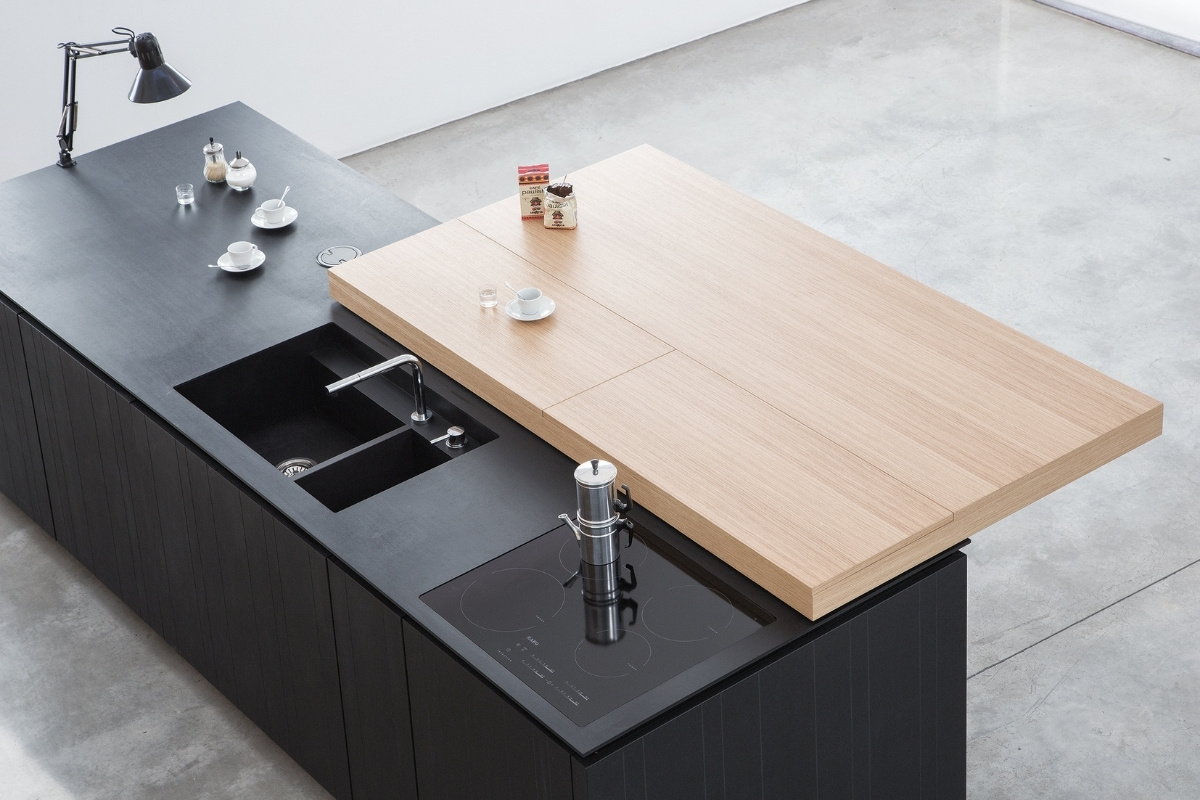
Application and use
This environmentally friendly product is ideal for architects and designers looking for a sustainable solution and is well suited to interiors across the commercial, office, space, hospitality, residential and healthcare sectors. PaperStone® offers specifiers the opportunity to reconnect people with the natural world through design, with its tactile warmth and hint of texture this surface material is beautifully unique.
Its composition delivers high performance across a range of applications. These include but are not limited to bars and tabletops, furniture, vertical decorative wall panels, washrooms, kitchen worksurfaces and cabinet doors, and washrooms.
Andy Noble, Divisional Managing Director, CDUK, commented: “We are thrilled to be the sole supplier of PaperStone® to the UK and Ireland market. At CDUK we have seen a real shift in the market with customers becoming more environmentally conscious. PaperStone® offers our clients a sustainable solution to their design needs. At CDUK we are constantly looking at ways to innovate and expand our offer and grow with our customers. The launch of PaperStone® marks a significant stage in our development and we are excited to help our customers make the most of this unique product.”
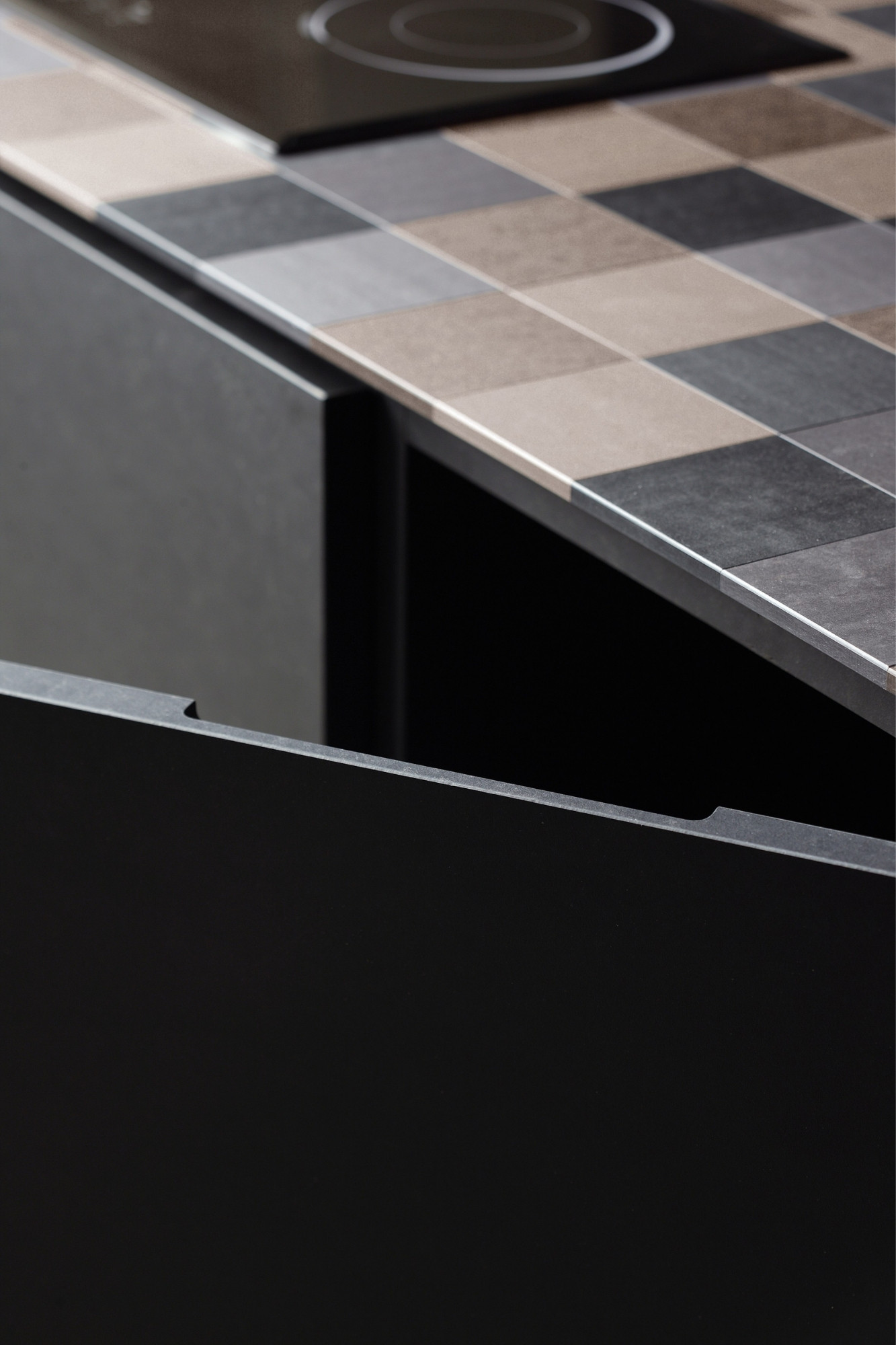
Manufacturing process and specifications
The surface material is manufactured using FSC certified recycled paper and natural petroleum free phenolic resin with natural pigments and has obtained important environmental certifications from the Forest Stewardship Council and qualifies for bio-building use and assignment of LEED® credits.
PaperStone® is impact resistant and hard wearing, resisting temperatures up to180° without showing any superficial changes while being water and stain resistant and easy to clean. The versatile nature of the material makes it a cost-efficient solution for a range of interior applications and can be cut and engraved depending on customers’ needs.
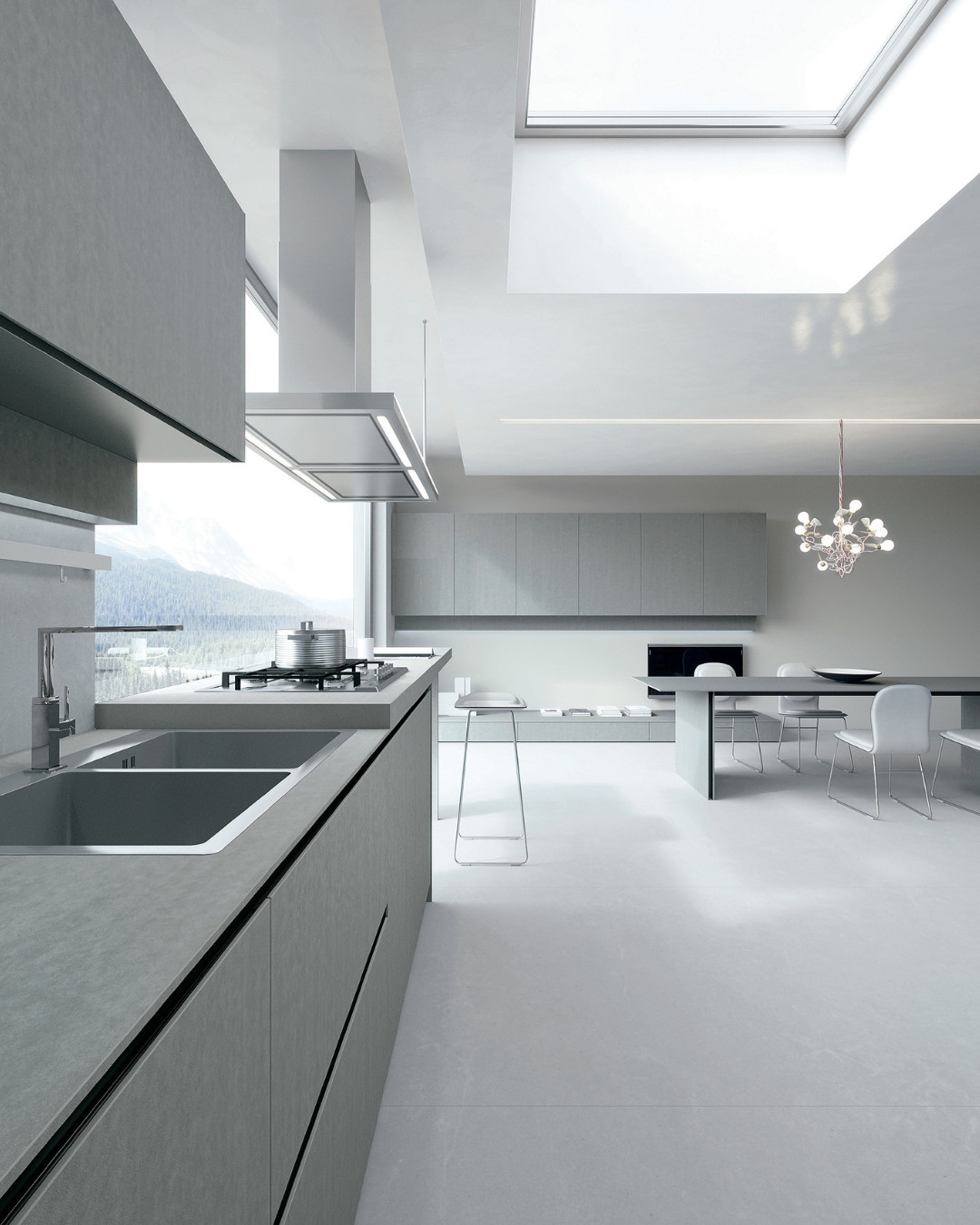
PaperStone® colours are warm and rich, reflecting nature often with a soft and subtle variegated finish, with eleven colours across two ranges. The Solid Colour Series includes five deep, rich organic colours. Some of these colours ‘evolve’ over time mellowing and growing with their environment to become more intense and warmer. The Designer Series has more of a geological than organic finish, with 6 lighter colours.
PaperStone® is available exclusively from CDUK in the UK and Ireland from 4th October 2021. The range includes 11 colours in a range of thicknesses selected based on our understanding of our key markets and knowledge of latest colour, texture and design trends.
About CDUK
CDUK is a supplier of surface materials and complementary products to the specification market in the UK and Ireland, including architects, interiors designers, kitchen designers, fabricators and contractors. Having built a strong reputation as the exclusive distributor of Corian® Solid Surface in the UK and Ireland, CDUK now offers an extended range of services as well as products from a number of leading brands.
We are a family owned business with over 40 years’ experience. We support our customers through a journey, as their design partner, from sourcing the best products and materials to helping them unlock their full potential through expert advice and technical knowledge. Our team of industry experts also provides technical advice, sampling and bespoke training courses for designers, manufacturers and fabricators.
If you’d like to feature your product news here, get in touch to find out more.
If you’d like to become SBID Accredited, click here for more information.
Kata Lips takes inspiration from Japanese culture and designs. Discover 3 new designs, created with oils, watercolours, pastels and acrylics. As her colours flow across the canvas, Zen-like landscapes and imaginary scenes emerge.
Nature is ever-present in Kata's work: tall trees, bamboo forests, bark, grasses and leaves are integral to each artwork. Her colour palette however varies from soft grey, green, blue and yellow to hyperreal bright.
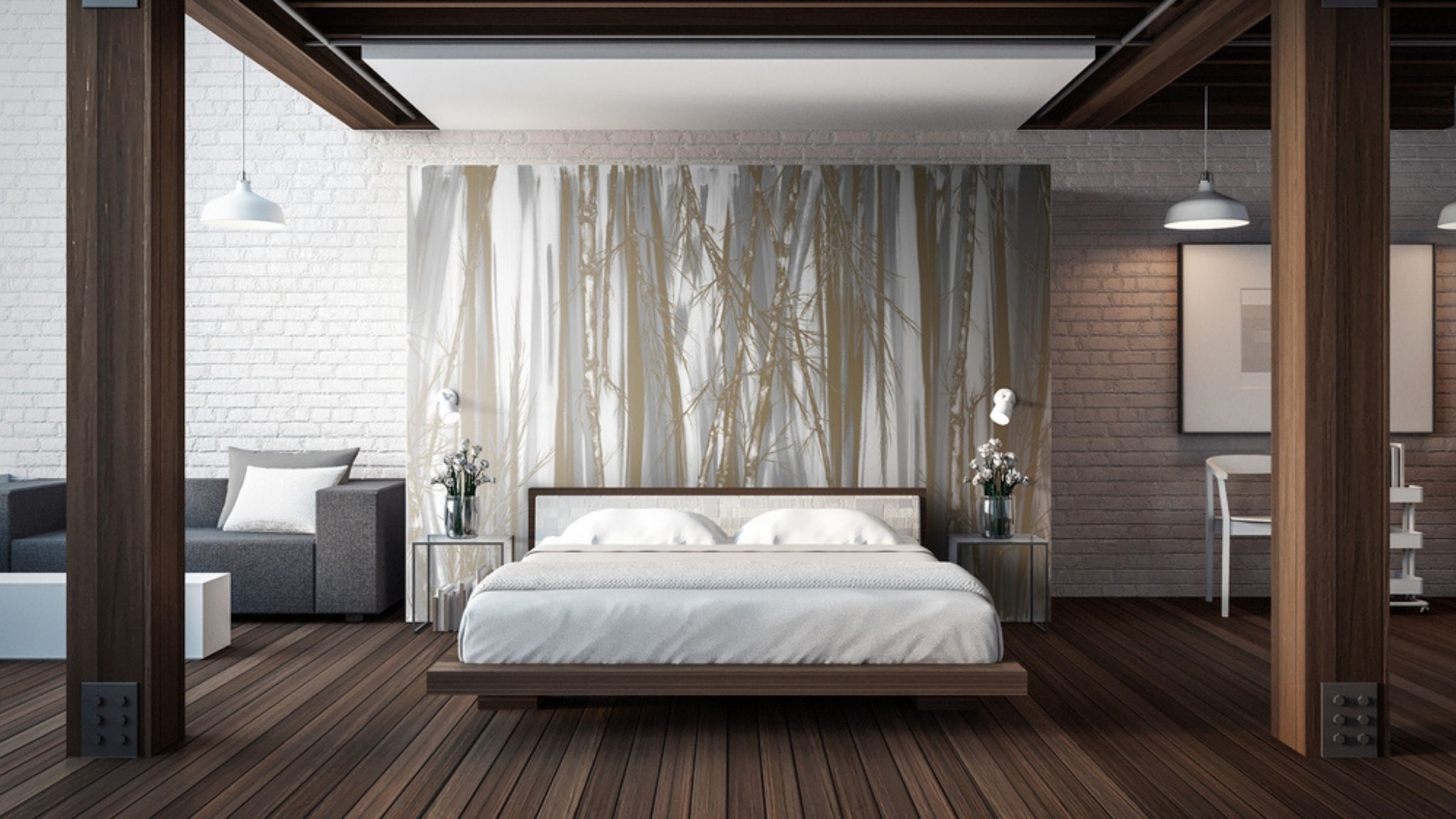
Each design can be scaled up to fill a wall 3m tall x 5m wide. All can be repeated for longer walls. Colours can be adjusted, and all designs are available as wallcovering, window fill, or printed onto Zintra acoustic panels.
Fire rating: Euroclass B
Cleaning: Washable, wipeable. Can be cleaned with diluted bleach.
Contains mildew inhibitor.
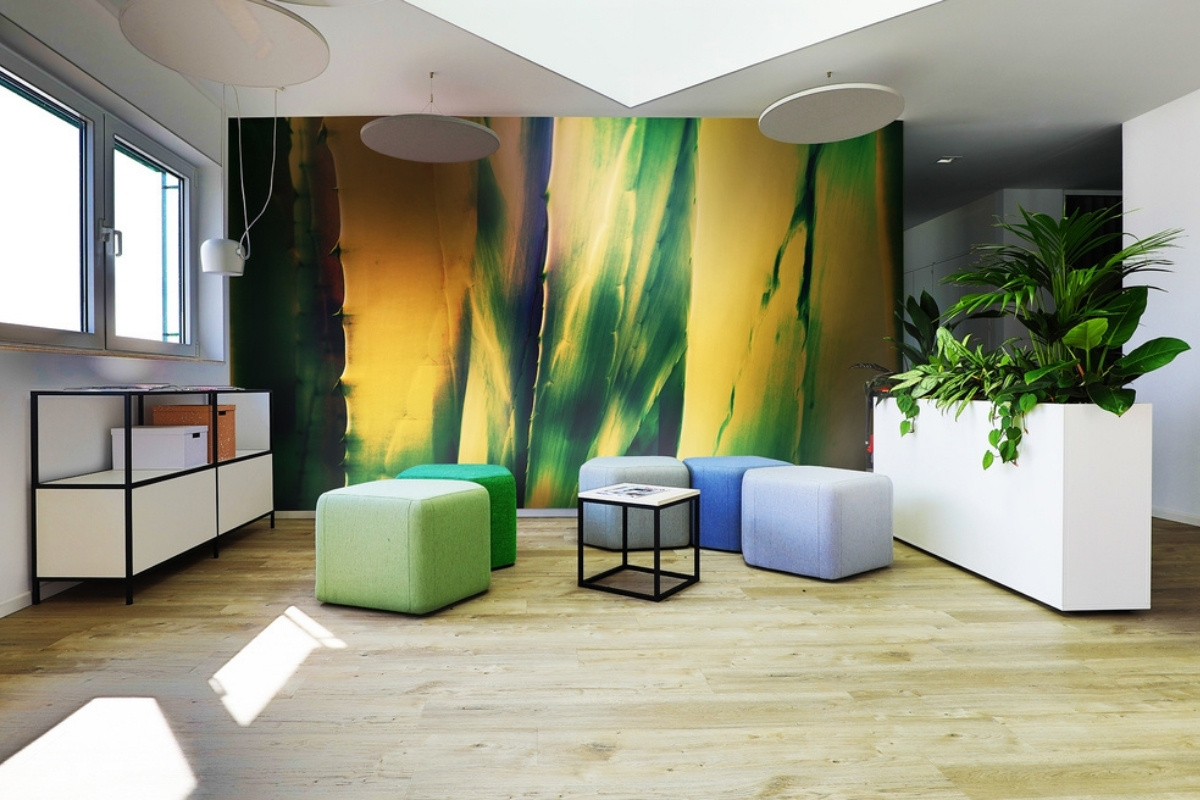
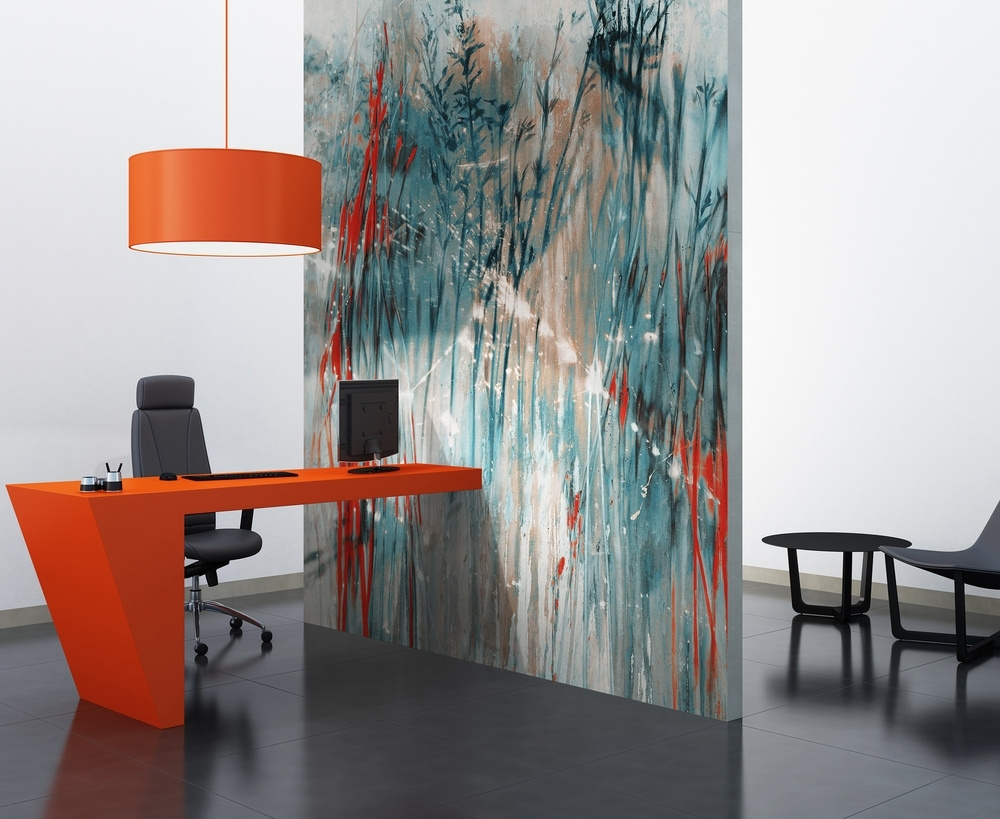
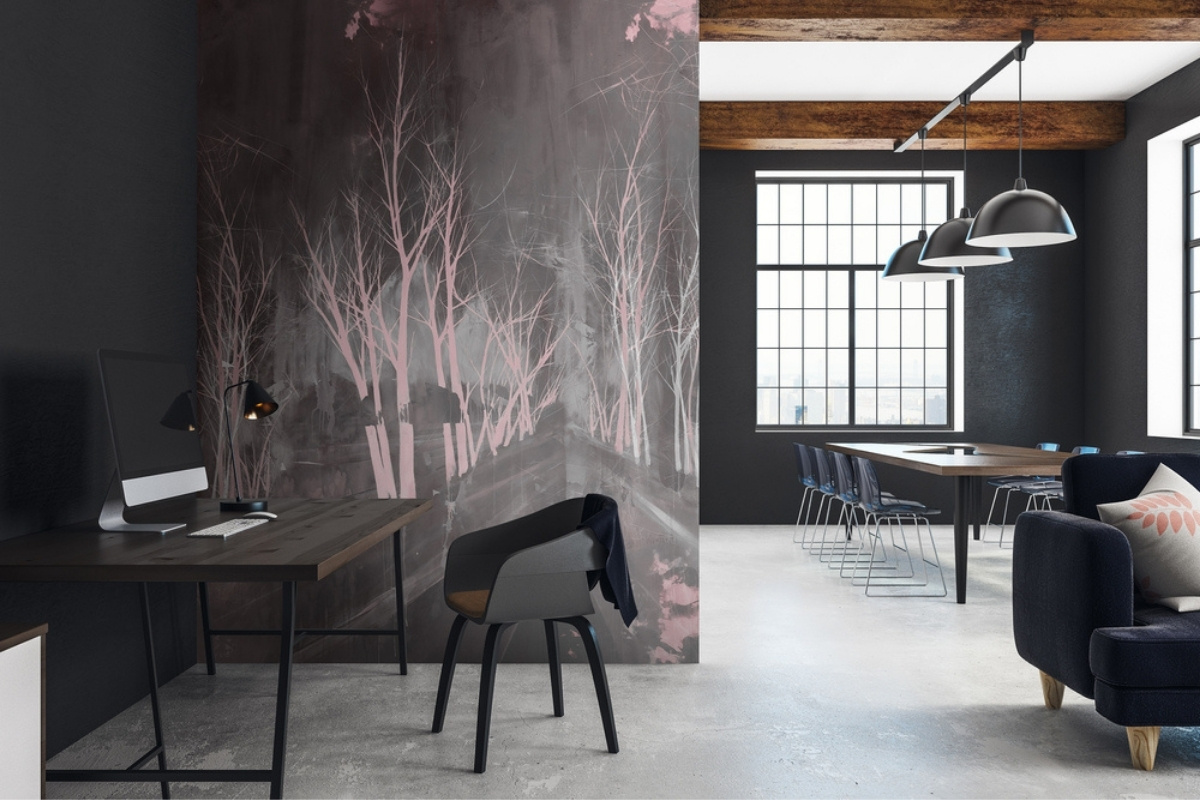
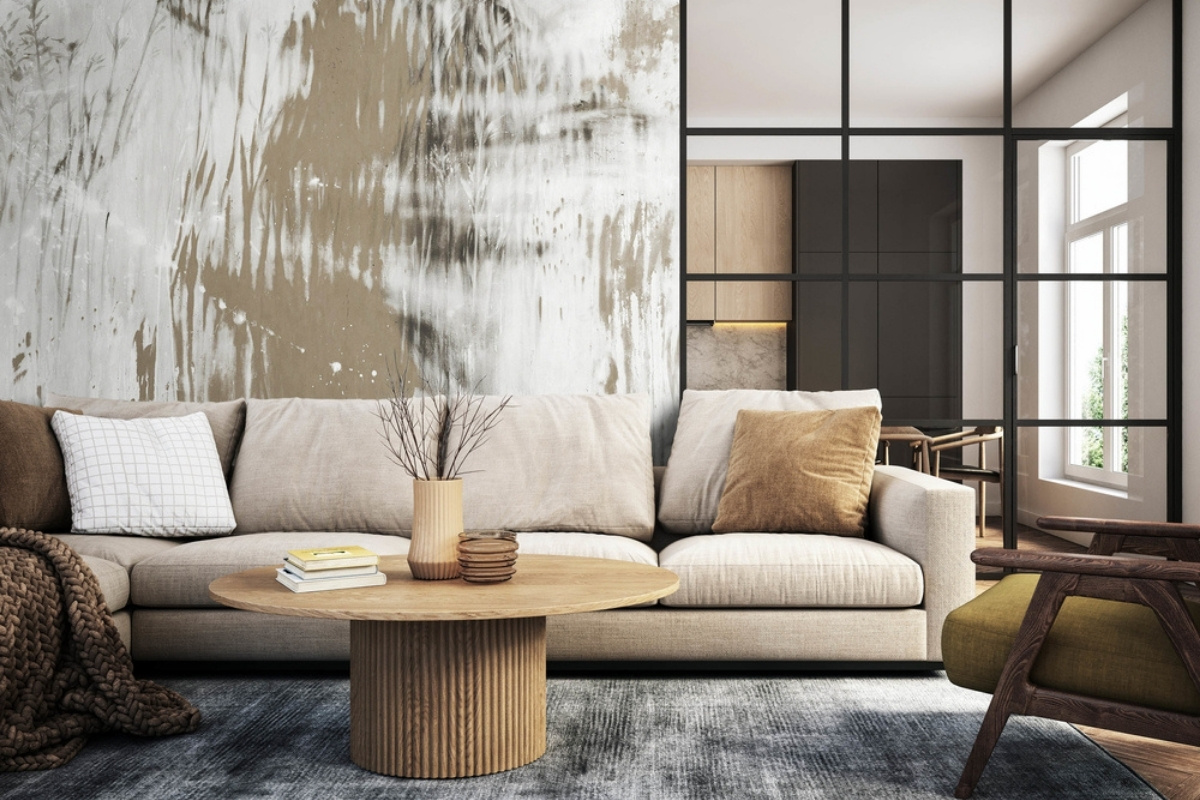
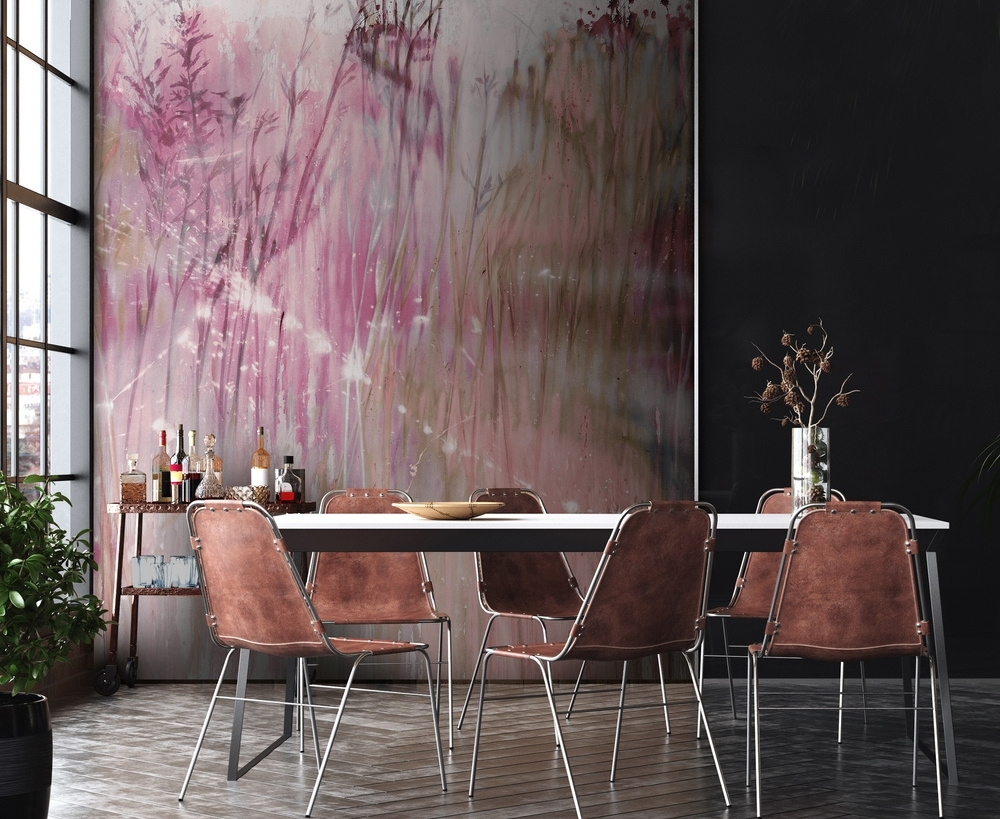
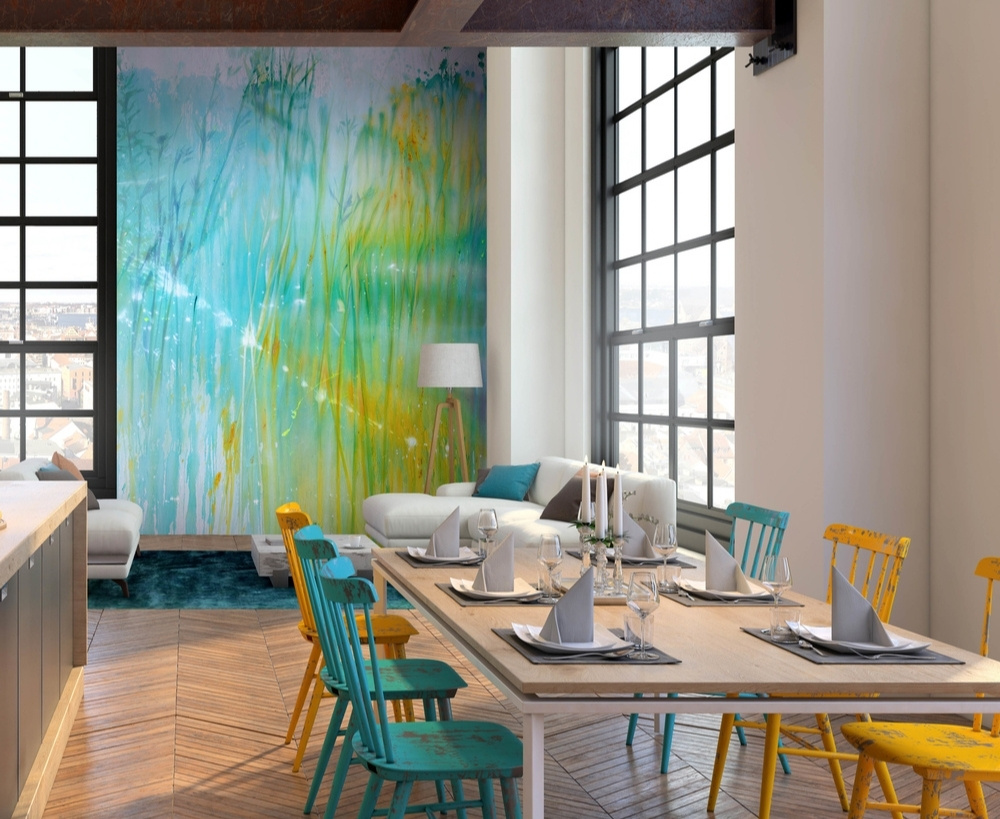
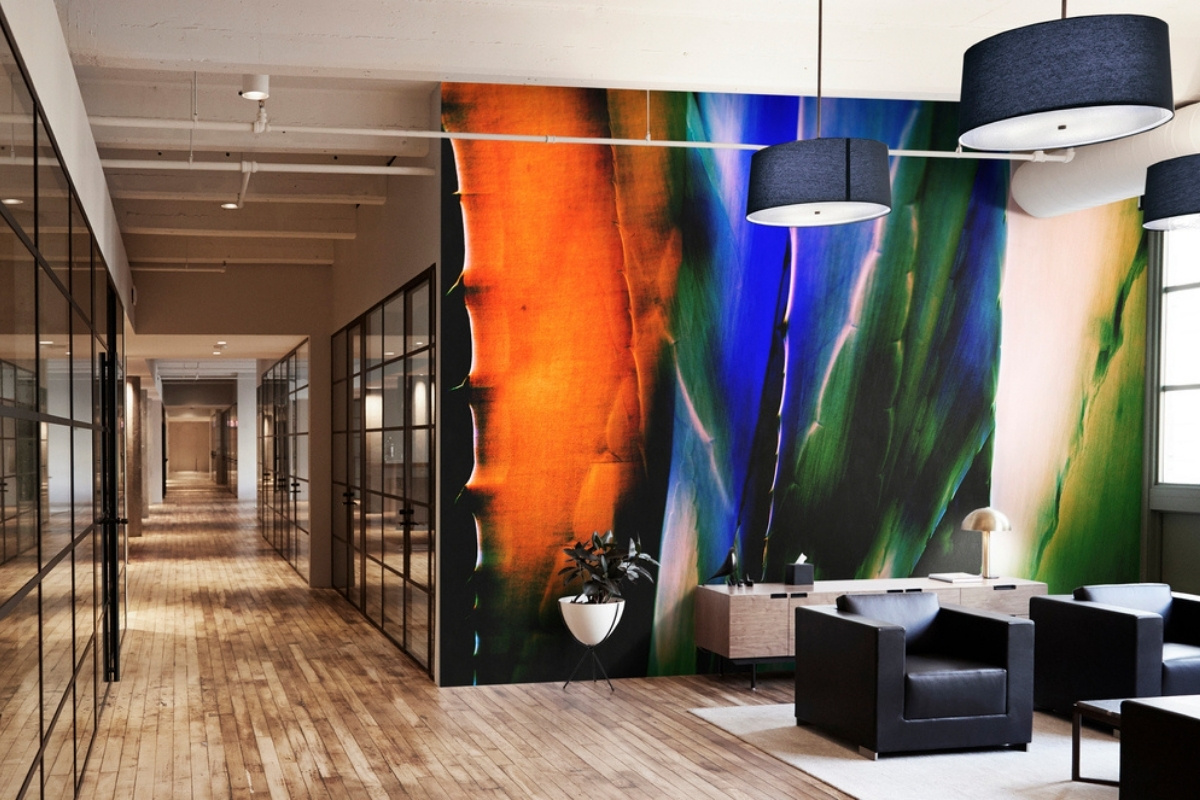
Cover image: Inaka in Lotus
About Tektura
Tektura are specialists in contract wallcoverings. Our life is colour, pattern and texture. We believe wallcovering can transform a space and we're dedicated to delivering outstanding product and service.
If you’d like to feature your product news here, get in touch to find out more.
If you’d like to become SBID Accredited, click here for more information.
In this week's interview with SBID Awards Product Design judge, Maria Vafiadis discusses the compatibility of luxury design and sustainability, addresses the unique challenges between designing private residences and hotels, and shares her views on repurposing in the industry.
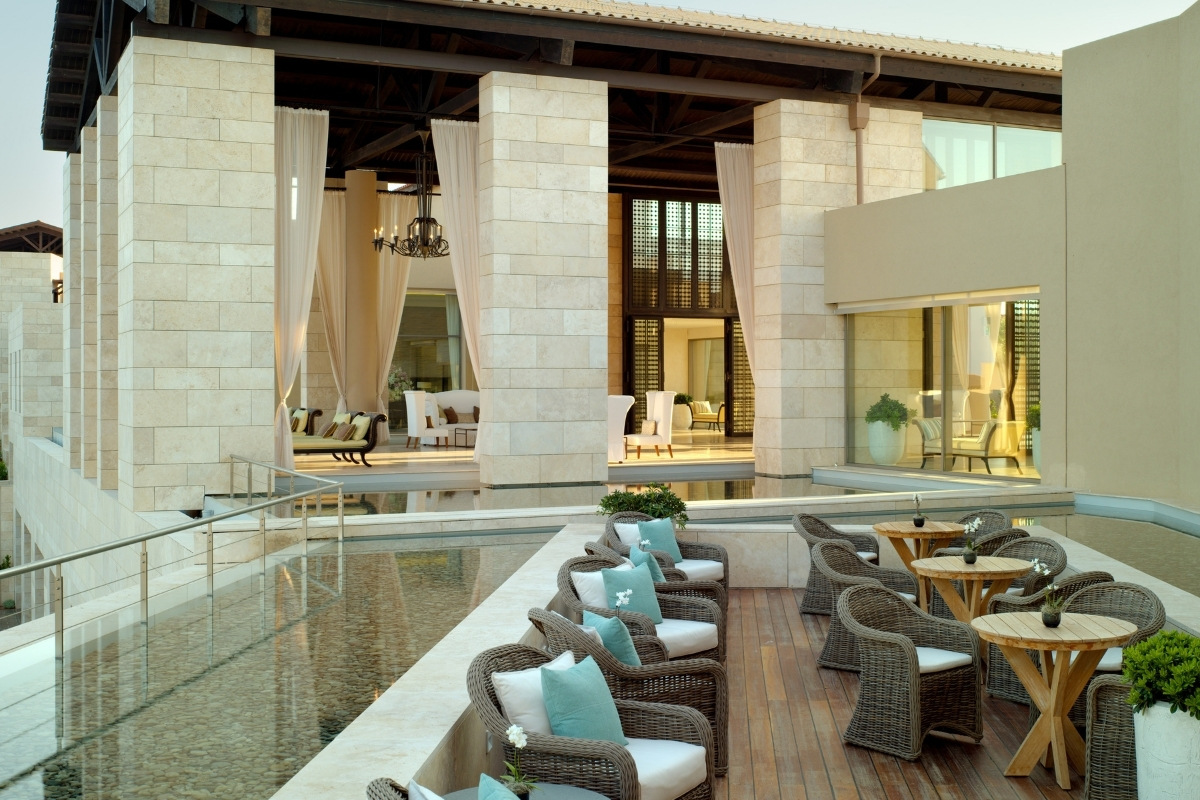
How would you define luxury today? Is it compatible with sustainability?
The luxury experience today is defined by space and how this space encourages us to make time for rejuvenation. This is one reason why many resorts and hotels are choosing to create standalone villas, cottages and treehouses where guests can quietly share time with family and friends and engage with the natural world.
Our new luxury values are increasingly compatible with sustainability. Government regulation, the marketability of eco-destinations, consumer demand and evidence that guests will pay a premium for experiences that respond to environmental and local community issues are coming together in a union which is already having an impact on hospitality. We are seeing a new, more thoughtful attitude to what luxury means together with a growing desire among owners and consumers to be better custodians of our planet’s resources.
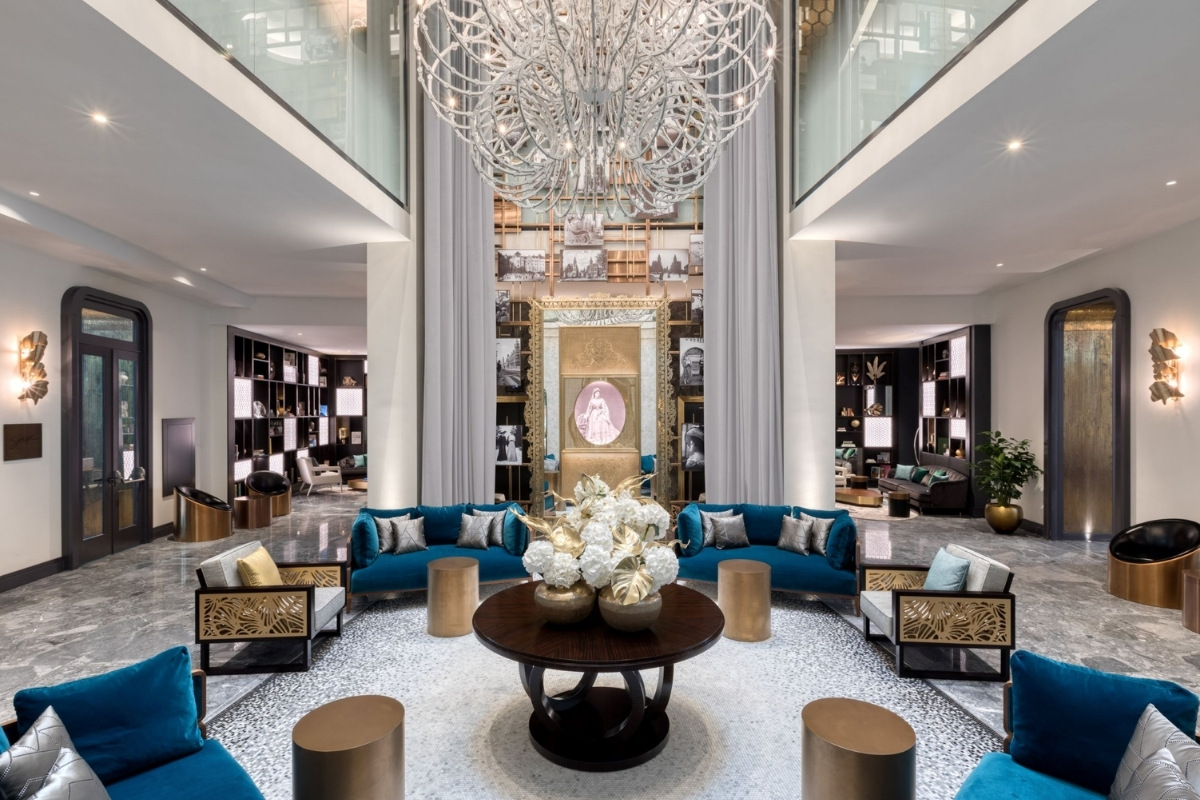
How different are your priorities when you are designing a private residence versus a hotel?
My single focus when designing a private residence is the owner and his/her family. It is all about the owner’s aspiration and the family’s way of life, and the end result should reflect their personalities. By contrast, hotel design has several parties to please – the owner, the operator and, of course, the guest. As a hotel designer, it’s key to create a narrative as the wellspring for the guest experience while you also have to respond to an array of commercial and operational realities.
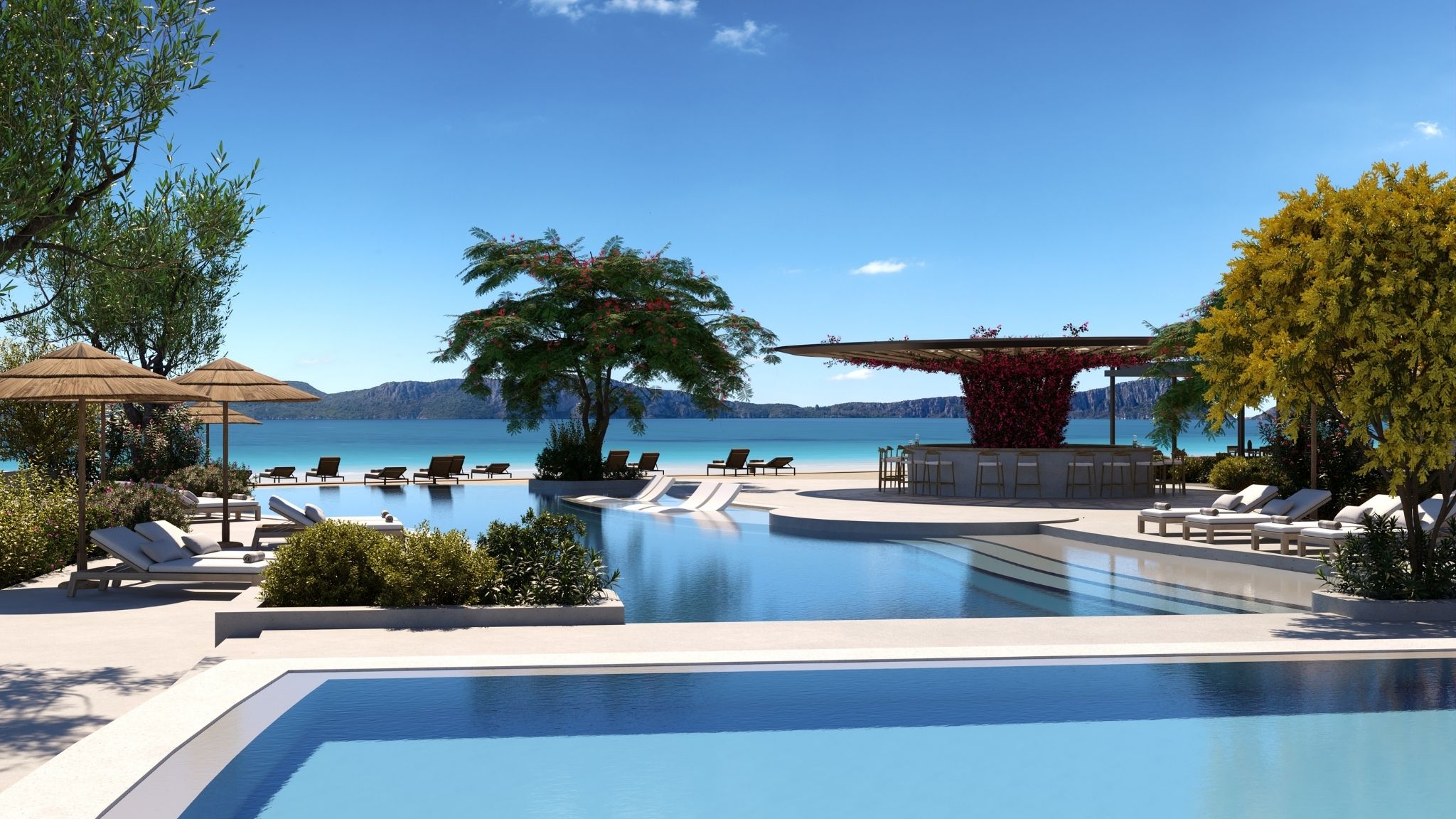
In your opinion, which offers the more interesting design opportunity – renovating a much-loved historic hotel or creating a new one?
It depends so much on the client and their aspiration; we have had amazing experiences working on both. Take for example Costa Navarino in Greece. It’s difficult to believe now but when we began our work on this resort it was no more than a bold vision to achieve a luxury destination which would celebrate the heritage and natural world of Messinia. It felt truly meaningful to work from a blank slate and create a new hospitality benchmark in the region.
Several years later, we were appointed on the recreation of The Burgenstock Resort in Switzerland. In its heyday, this had been a glamorous and pioneering destination and it was our task to take this legacy forward into a new era. This was a project that involved repurposing, refurbishment, extensions and new buildings. Its strapline ‘The Future has a Past’ was fascinating to honour and reflect in our work.
I must admit that I do enjoy delving into the past, discovering what was there and helping it to flourish again by combining the old and the new. We have just had a wonderful opportunity to do this in creating Matild Palace Budapest, a Luxury Collection Hotel. The lifestyle of the Archduchess of Austria who commissioned the original building was our inspiration and we wove our narrative around her imagined presence in the new hotel.
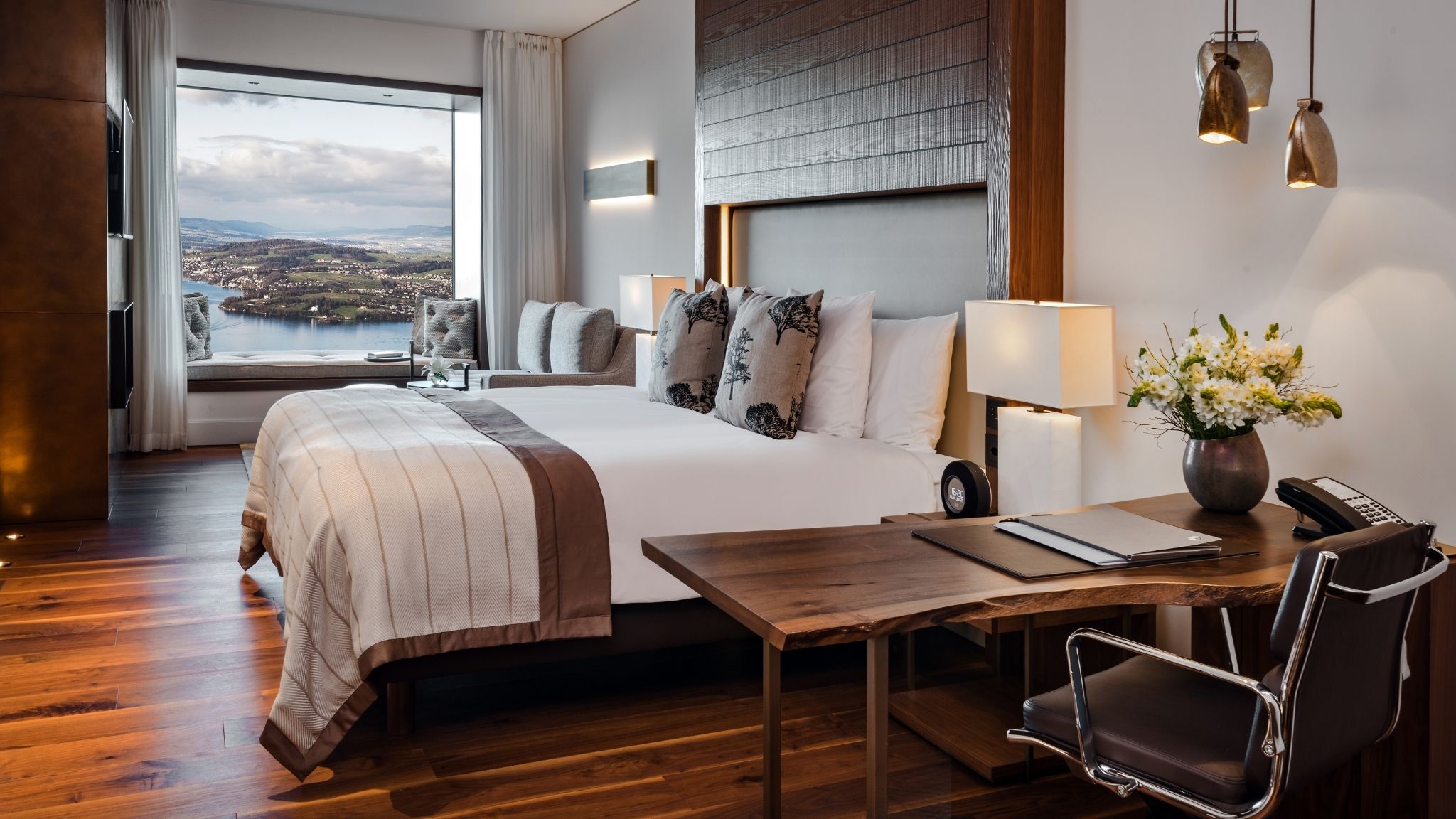
What are your priorities in making FF&E selections for your projects?
We love to work with artisanal and locally sourced products and, since sustainability is high on our agenda, we are always interested in re-purposed items. We believe in the inherent beauty of natural materials, tactility and in products that are well-made – longevity of things is one of the greatest gifts we can bestow on our planet.
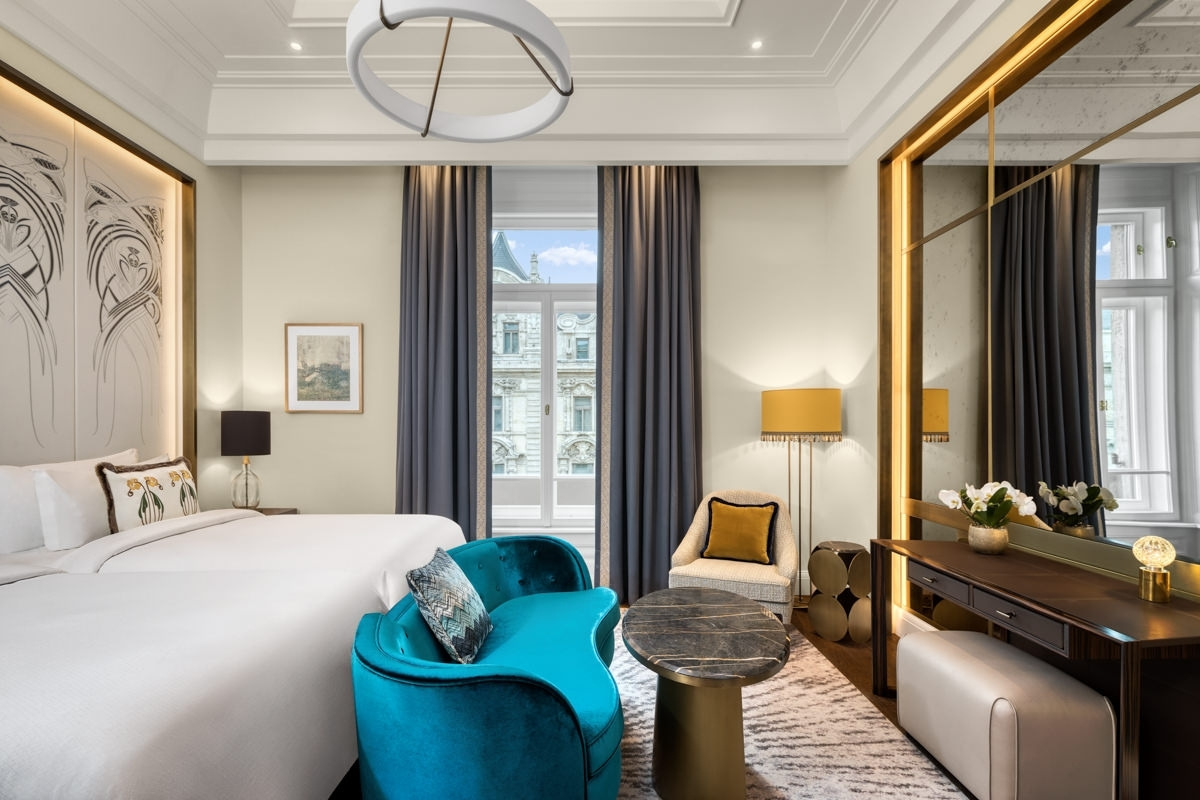
You have recently published a book called Design Alchemist. What was the thinking behind this title?
At MKV, we believe in the power of design to affect behaviour and elicit emotion. This requires design that combines location, culture, history and modern life in any number of contextual stories which we tell. When they come together in the right balance for the particular project, alchemy results and a kind of chemistry is released between the space and its users.
Cover image: Alpine Spa, Burgenstock Resort
Questions answered by Maria Vafiadis, Founder & Managing Director, MKV Design.
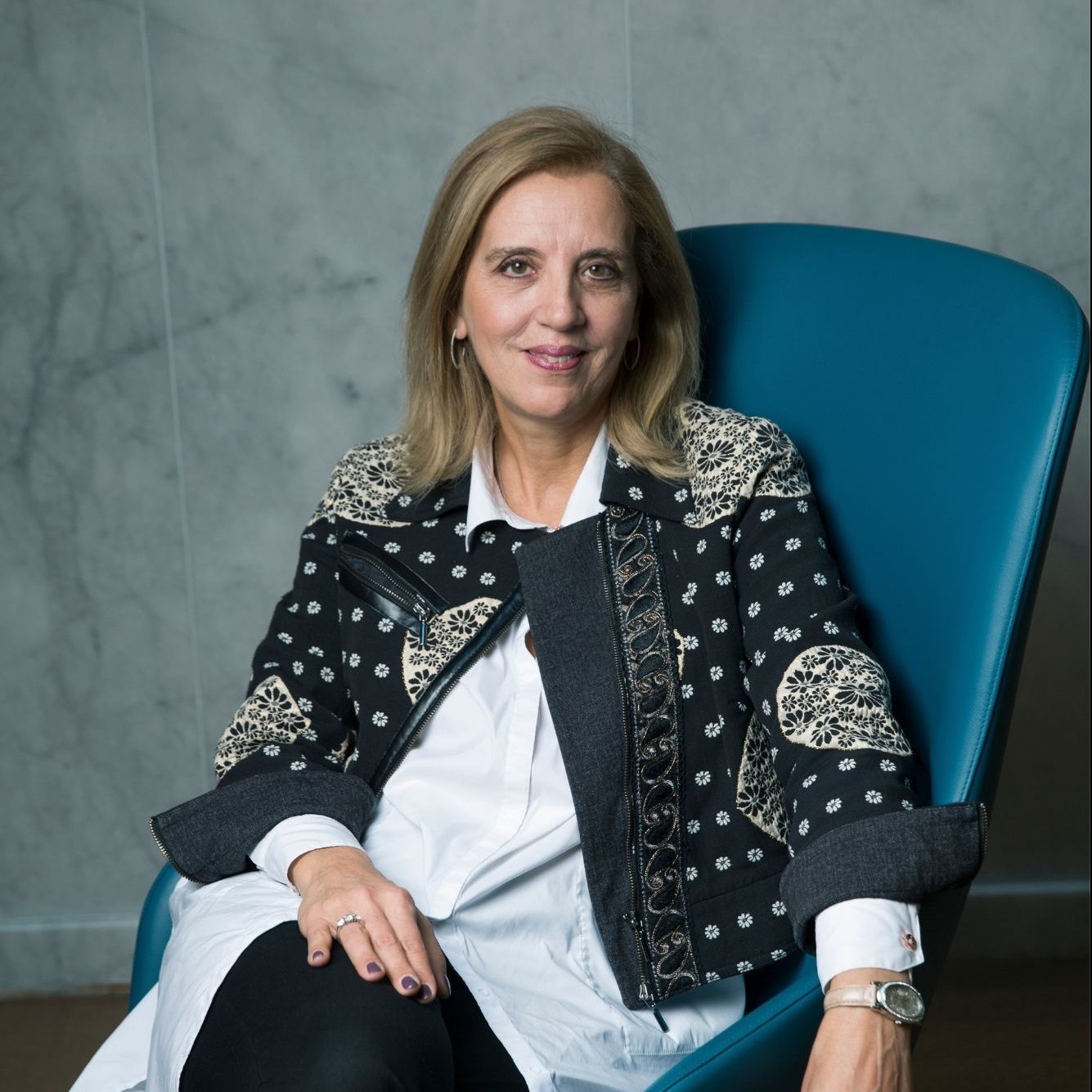
MKV Design's mission is to create environments that deliver on every level. Aesthetic, practical, commercial, experiential. We achieve this by applying intelligence to design. By developing a personal vision for every project, setting the most uncompromising standards and working side by side with our clients to bring that vision to life. It’s an approach that has cemented our reputation as world-class designers of luxury hotels, resorts and private residences
